Articles > Geography
Ready to challenge yourself to the Asia Capitals Identifier or Asia Capital Locator quiz? Here are the capitals of Asia.
Afghanistan – Kabul
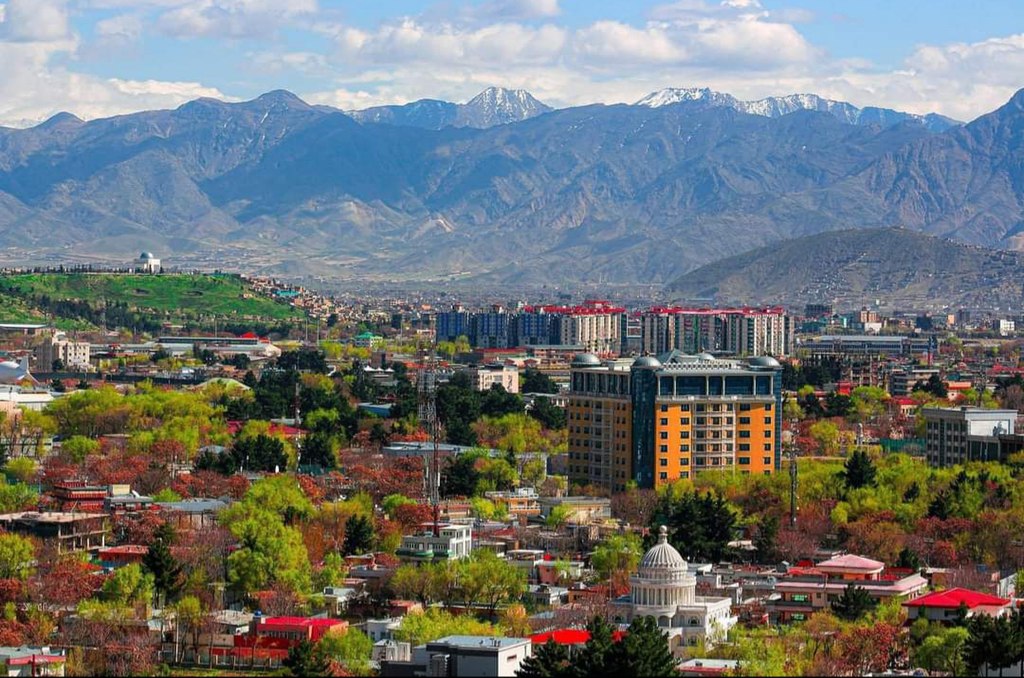
Kabul, the capital of Afghanistan, is the largest city in the country and serves as its political, cultural, and economic center. Located in a narrow valley, Kabul has a history dating back over 3,000 years. It has been a significant city along major trade routes, particularly the ancient Silk Road. The city has experienced immense challenges, including periods of war and political instability. Despite this, Kabul remains a symbol of resilience for the Afghan people. The city features various historical landmarks, such as the Kabul National Museum, the Bagh-e-Babur (Babur Gardens), and the iconic Kabul River. Kabul’s diverse population includes ethnic groups such as Pashtuns, Tajiks, Hazaras, and Uzbeks, contributing to its cultural richness.
Interesting Fact:
Kabul has one of the highest elevations for a capital city in the world, sitting at 1,790 meters (5,873 feet) above sea level.
Armenia – Yerevan
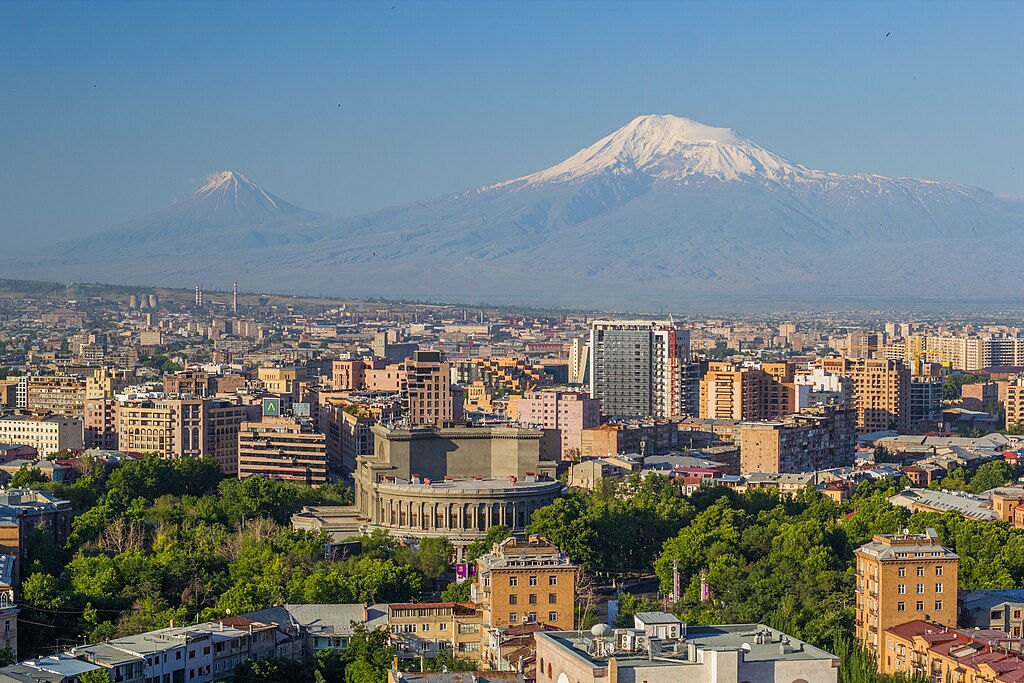
Yerevan, the capital of Armenia, is one of the oldest continuously inhabited cities in the world. Founded in 782 BCE, Yerevan was initially an Urartian fortress before growing into the vibrant city it is today. Located on the western bank of the Hrazdan River, the city has played an integral role in Armenian culture, politics, and history. It is home to the Republic Square, which is surrounded by several key government buildings. Yerevan also hosts many landmarks, such as the Armenian Genocide Memorial and the beautiful Cascade Complex. The city has a modern feel, with numerous cafes, theaters, and art galleries, making it a cultural hotspot in the region.
Interesting Fact:
Yerevan is often referred to as the “Pink City” because of the distinctive pink-colored tuff stone used in its buildings.
Azerbaijan – Baku
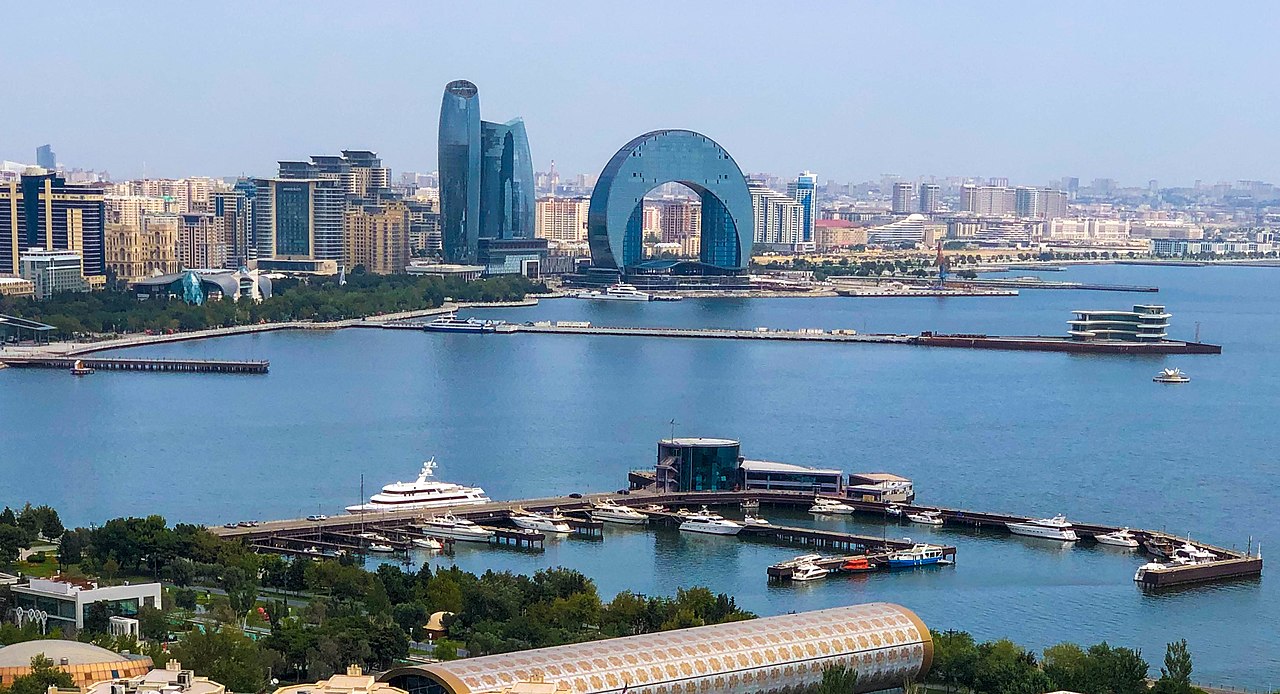
Baku, the capital of Azerbaijan, is the largest city on the Caspian Sea and the largest city in the Caucasus region. It has a rich history, dating back to ancient times when it was an important trading hub. Baku is known for its oil reserves, which have contributed significantly to the country’s wealth and development. The city is a blend of modern and ancient architecture, with the Flame Towers dominating the skyline and the UNESCO-listed Old City (Icherisheher) representing its historical heart. Baku also has a thriving arts and cultural scene, hosting international events such as the Eurovision Song Contest and Formula 1 Grand Prix. The city’s pleasant climate and vibrant nightlife make it an attractive destination for tourists.
Interesting Fact:
Baku is known for its “Windy City” nickname, as strong winds often blow through the city due to its location along the Caspian Sea.
Bahrain – Manama
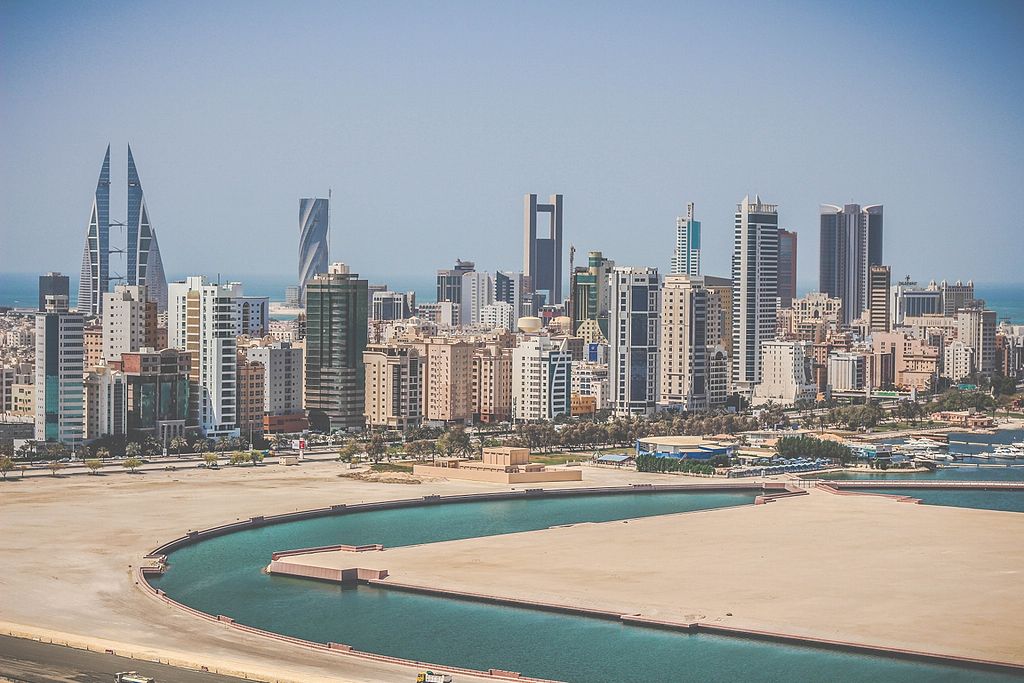
Manama, the capital of Bahrain, is a bustling financial center and the largest city in the country. Situated on the northeastern coast of Bahrain Island, it has a rich history as a trading port and a hub for pearl diving. Today, it is known for its modern skyline, bustling souks, and thriving business district. Manama serves as the economic heart of Bahrain, housing various multinational companies, as well as banks and financial institutions. The city’s cultural scene is diverse, influenced by both its Islamic heritage and global connections. Landmarks such as the Bahrain National Museum and the Al Fateh Grand Mosque highlight the country’s rich history and religious significance.
Interesting Fact:
Manama has the largest mosque in Bahrain, the Al Fateh Grand Mosque, which can accommodate up to 7,000 worshippers at once.
Bangladesh – Dhaka
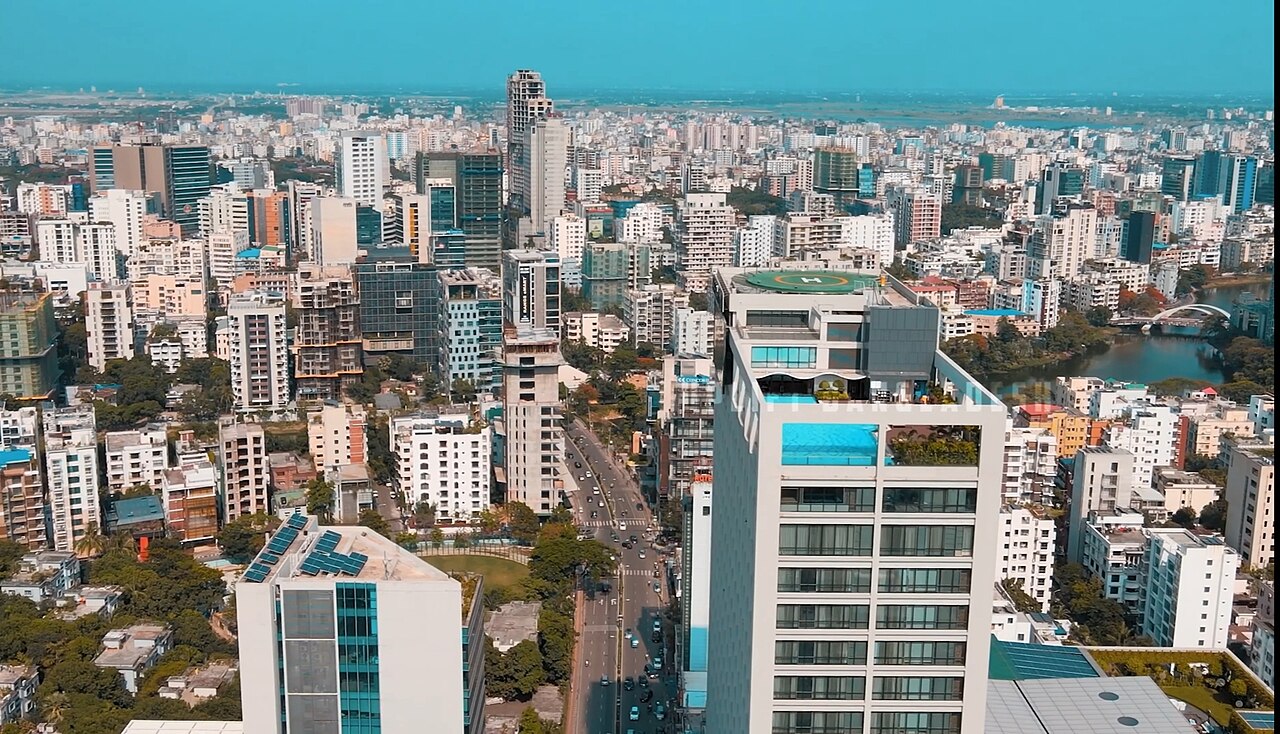
Dhaka, the capital of Bangladesh, is one of the most populous cities in the world. It is the political, economic, and cultural center of the country. Dhaka has a long history, dating back to the 7th century when it was part of the Bengal region. The city has grown rapidly over the years and is now known for its vibrant street life, with bustling markets and rich cultural traditions. Dhaka’s architecture blends colonial-era buildings with modern skyscrapers. Notable landmarks include the Lalbagh Fort, the National Museum, and the historic Ahsan Manzil. Despite its challenges with overpopulation and traffic, Dhaka remains a lively and energetic city.
Interesting Fact:
Dhaka is known as the “City of Rickshaws” due to the abundance of cycle rickshaws that serve as a primary mode of transportation in the city.
Bhutan – Thimphu

Thimphu, the capital of Bhutan, is a unique and peaceful city nestled in the Himalayas. Known for its stunning natural beauty, Thimphu serves as the political, cultural, and economic center of Bhutan. It is the only capital city in the world without traffic lights, reflecting the country’s emphasis on preserving tradition and culture. Thimphu is home to several iconic landmarks, including the Tashichho Dzong, a fortress-monastery that houses government offices and the king’s throne room. The city’s serene environment is complemented by a rich heritage of Buddhism, with numerous monasteries and stupas dotting the landscape.
Interesting Fact:
Thimphu is the only capital city in the world that does not have any traffic lights. Instead, traffic is controlled by policemen at key intersections.
Brunei – Bandar Seri Begawan
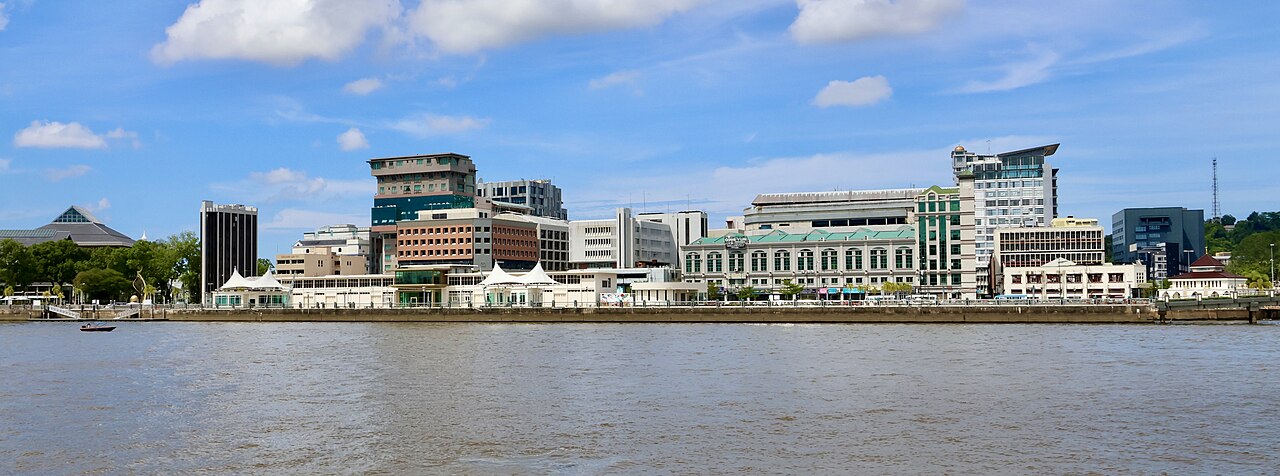
Bandar Seri Begawan, the capital of Brunei, is a serene city surrounded by lush forests and waterways. Despite being a small capital city, it is rich in history and culture. Founded in the 14th century, it grew as a center for the Brunei Sultanate. The city is named after Sultan Seri Begawan, and its significance is closely tied to the Sultan’s monarchy. Bandar Seri Begawan is known for its beautiful Islamic architecture, with landmarks such as the Sultan Omar Ali Saifuddien Mosque, a stunning building that stands as a symbol of Brunei’s Islamic heritage. The capital is also famous for its waterfront, luxury shopping, and pristine streets. Brunei’s wealth, largely from oil, is reflected in the city’s modern infrastructure and high standard of living.
Interesting Fact:
Bandar Seri Begawan is home to the largest residential palace in the world, Istana Nurul Iman, which serves as the official residence of the Sultan of Brunei.
Cambodia – Phnom Penh
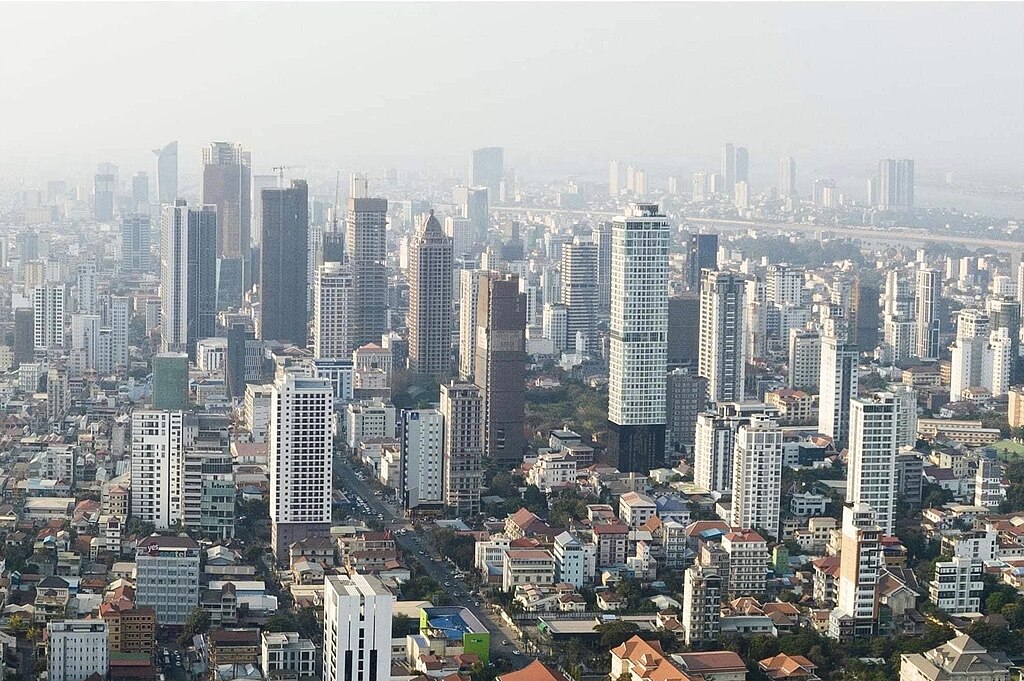
Phnom Penh, the capital of Cambodia, is situated at the confluence of the Tonle Sap, Mekong, and Bassac rivers. It is the largest city in Cambodia and serves as the economic, cultural, and political heart of the country. Phnom Penh has a rich history, once known as the “Pearl of Asia” during the French colonial period, due to its beautiful French-influenced architecture and its status as a center of trade. The city is home to several important landmarks, including the Royal Palace, the Silver Pagoda, and the National Museum, all of which reflect Cambodia’s deep cultural and royal heritage. Despite a tumultuous history, including the Khmer Rouge era, Phnom Penh has rapidly modernized and is now a bustling metropolis. The city is famous for its lively street markets, vibrant food scene, and welcoming atmosphere.
Interesting Fact:
Phnom Penh was known as the “Pearl of Asia” during the French colonial era due to its grand architecture and importance in Southeast Asia’s trade routes.
China – Beijing
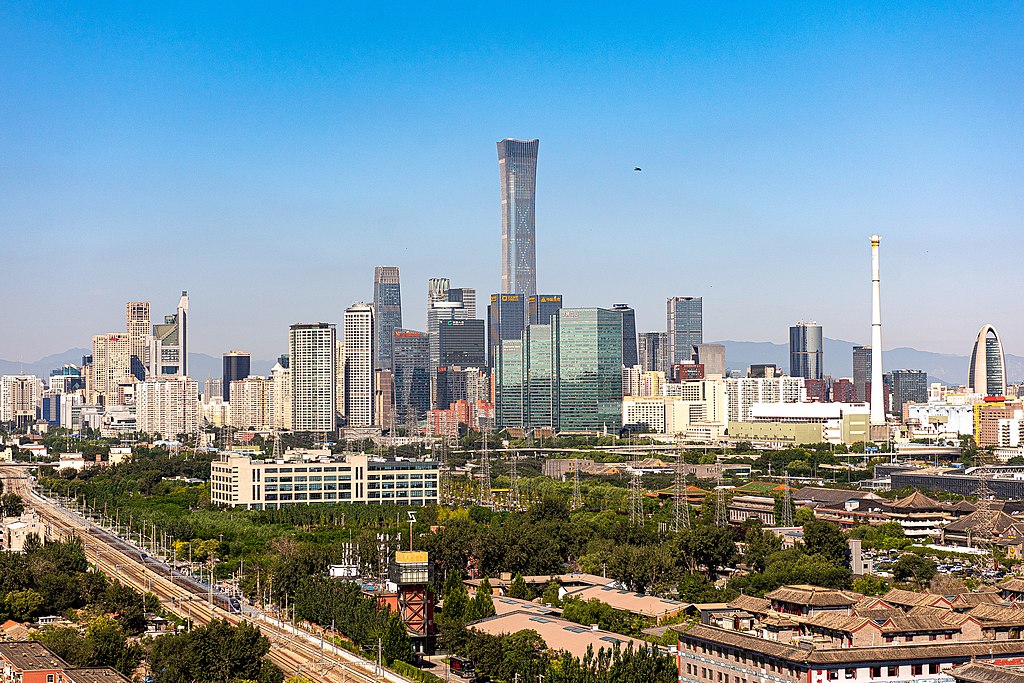
Beijing, the capital of China, is a city rich in history, culture, and political significance. It is one of the most populous cities in the world and has been the political center of China for centuries. As the capital of several Chinese dynasties, Beijing boasts numerous historical sites, such as the Forbidden City, the Temple of Heaven, and the Great Wall of China. The city’s blend of ancient history and modern development makes it an exciting destination. Modern Beijing is known for its skyscrapers, high-tech infrastructure, and as the hub of China’s politics, culture, and business. Beijing is also home to several international organizations and is one of the world’s leading cultural and educational centers.
Interesting Fact:
The Great Wall of China, which is one of the most famous landmarks in the world, stretches over 13,000 miles, much of which is located in the Beijing area.
Georgia – Tbilisi
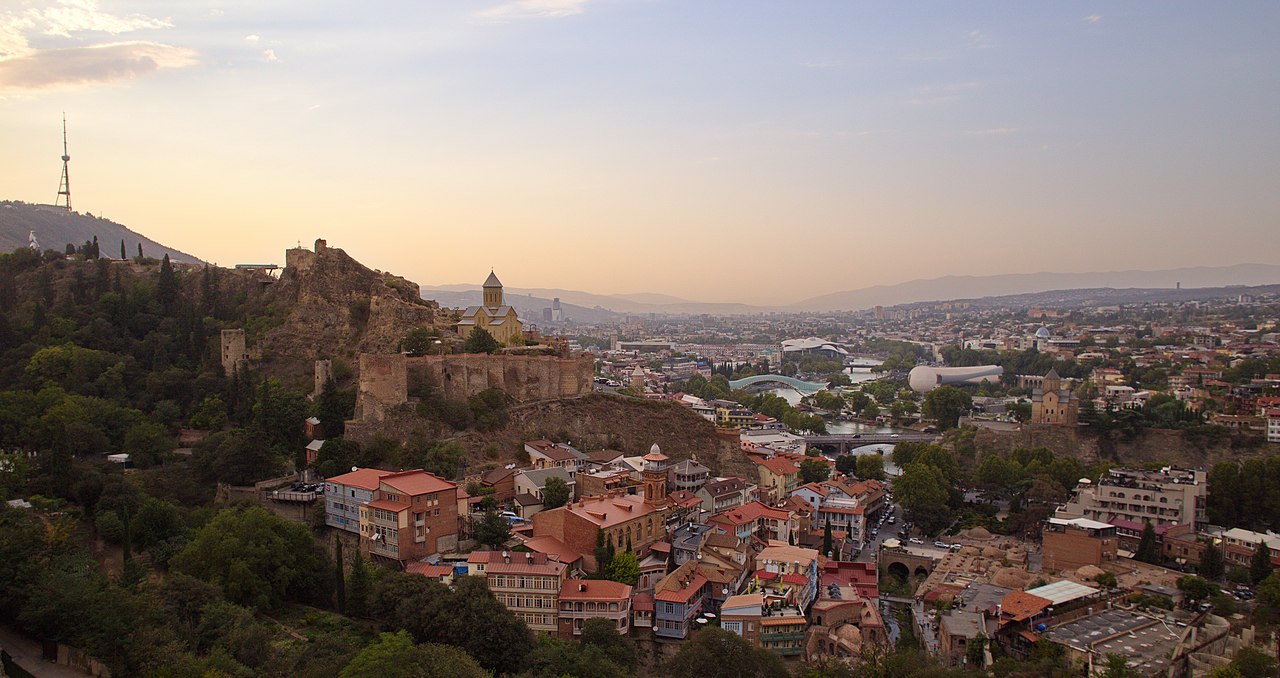
Tbilisi, the capital of Georgia, is a city that blends ancient history with vibrant modern life. Located on the banks of the Kura River, Tbilisi is known for its scenic landscapes, including surrounding hills and valleys. The city’s architecture reflects a rich history influenced by various cultures, including Persian, Russian, and Byzantine. Tbilisi is home to several important historical landmarks, such as the Narikala Fortress, the Holy Trinity Cathedral, and the sulfur baths. The city has a thriving arts scene, with a growing number of theaters, galleries, and music venues. It is also a major center of Georgian cuisine, which is renowned for its wine and distinctive flavors.
Interesting Fact:
Tbilisi is known for its “Old Town,” a district with narrow, winding streets that are full of ancient churches, wooden houses, and picturesque cafes.
India – New Delhi

New Delhi is the capital city of India and serves as the political, administrative, and cultural center of the country. New Delhi is part of the larger National Capital Territory of Delhi, and it is home to many significant government buildings, including the President’s House, Parliament House, and the Supreme Court. The city is known for its mix of historical landmarks, such as the India Gate, Red Fort, and Humayun’s Tomb, as well as its modern infrastructure. New Delhi is also a hub for arts, music, and theater, representing the rich cultural diversity of India. The city’s busy streets, bustling markets, and eclectic neighborhoods reflect the vibrancy of India itself.
Interesting Fact:
New Delhi is one of the most populous capitals in the world, with a population exceeding 20 million people, and it is known for its vibrant street food scene.
Indonesia – Jakarta

Jakarta, the capital of Indonesia, is the largest city in the country and one of the most populous cities in Southeast Asia. Located on the island of Java, Jakarta is a bustling metropolis known for its diverse culture, history, and economic importance. As the political, economic, and cultural hub of Indonesia, Jakarta is home to many important landmarks, such as the National Monument, the Istiqlal Mosque, and the Presidential Palace. The city’s skyline is a mix of modern skyscrapers and colonial-era buildings. Jakarta is also known for its vibrant street life, rich culinary traditions, and diverse population that includes various ethnic groups and religions.
Interesting Fact:
Jakarta is one of the fastest-sinking cities in the world, with parts of the city sinking by as much as 25 cm per year due to over-extraction of groundwater.
Iran – Tehran

Tehran, the capital of Iran, is the largest city in the country and serves as its political, economic, and cultural center. Located in the northern part of Iran, Tehran lies at the foot of the Alborz Mountains. The city is home to a number of important landmarks, including the Golestan Palace, the National Museum of Iran, and the Azadi Tower. Tehran is also known for its bustling bazaars, modern shopping malls, and vibrant arts scene. The city is a hub of intellectual and political activity and plays a significant role in shaping the direction of the country. Despite facing challenges such as air pollution and traffic congestion, Tehran remains a dynamic and fast-growing metropolis.
Interesting Fact:
Tehran has one of the largest metro systems in the Middle East, offering a vital form of transportation in the city’s densely populated urban area.
Iraq – Baghdad
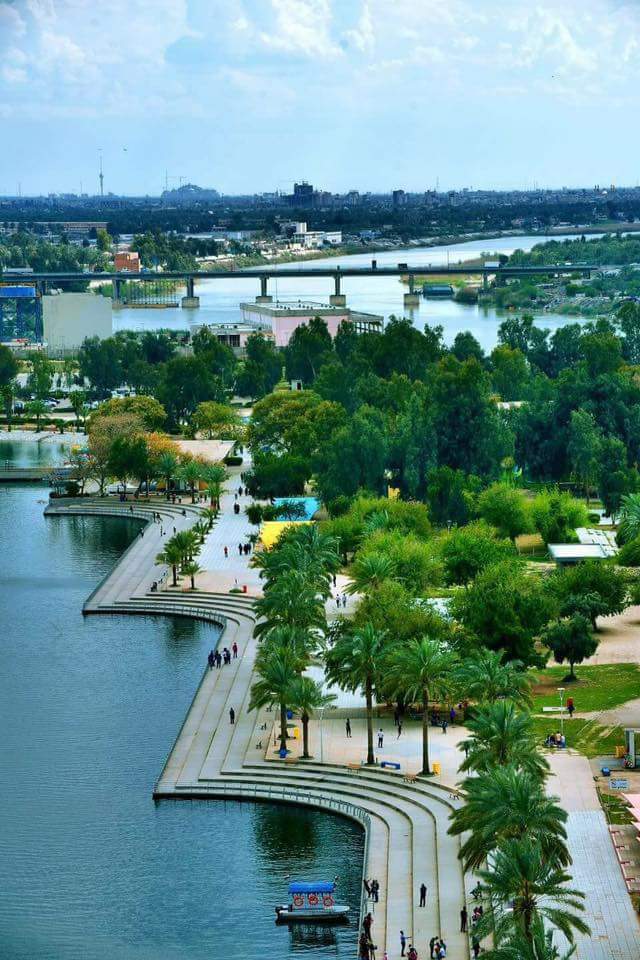
Baghdad, the capital of Iraq, is one of the oldest cities in the world and a center of historical and cultural significance. Founded in the 8th century, Baghdad was once the heart of the Islamic Golden Age, a time when the city was a global hub for learning, trade, and innovation. Today, Baghdad is still a major political, economic, and cultural center in Iraq. The city is known for its historical sites, such as the Abbasid-era Al-Mustansiriya University and the National Museum of Iraq, which houses artifacts from ancient Mesopotamia. Despite the challenges of conflict and rebuilding, Baghdad remains a city of resilience and historical importance.
Interesting Fact:
Baghdad was the center of the Islamic Golden Age, with scholars making important advancements in science, medicine, and mathematics.
Israel – Jerusalem
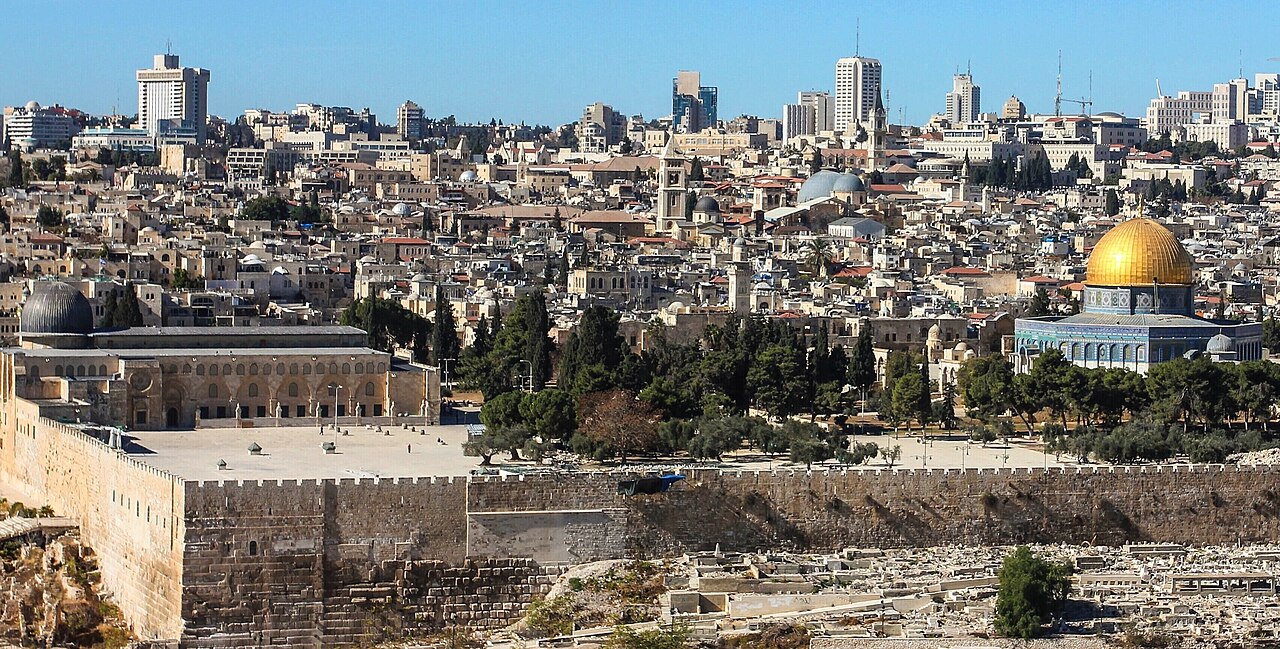
Jerusalem is one of the most significant cities in the world, steeped in history and spiritual importance. It is the capital of Israel and one of the oldest cities, with its origins tracing back to ancient times. Jerusalem is sacred to three major world religions: Judaism, Christianity, and Islam. The city is home to several of the most revered religious sites, including the Western Wall, the Church of the Holy Sepulchre, and the Dome of the Rock. The Old City of Jerusalem, with its narrow, winding streets, is a UNESCO World Heritage site. The city also blends modernity with tradition, as it hosts vibrant cultural institutions, museums, and a growing tech industry. Jerusalem is a city where the ancient and the modern coexist, and it remains a focal point for religious pilgrimage and global political attention.
Interesting Fact:
Jerusalem is the only city in the world that is considered sacred by Jews, Christians, and Muslims, making it a unique cultural and religious hub.
Japan – Tokyo

Tokyo, the capital of Japan, is one of the most vibrant and innovative cities in the world. It is a sprawling metropolis, known for its blend of cutting-edge technology and traditional culture. As Japan’s economic, political, and cultural heart, Tokyo offers something for everyone, from ancient temples like Senso-ji to high-tech landmarks such as the Tokyo Skytree. The city is famous for its efficient public transportation system, including one of the busiest subway networks in the world. Tokyo also stands at the forefront of global fashion, entertainment, and cuisine, with districts like Shibuya and Shinjuku being famous for shopping, dining, and nightlife. Despite its modernity, Tokyo is also a city rich in parks, shrines, and museums, where the beauty of nature and history is preserved amid urban development.
Interesting Fact:
Tokyo is the most populous metropolitan area in the world, with over 37 million people living in the Greater Tokyo Area.
Jordan – Amman
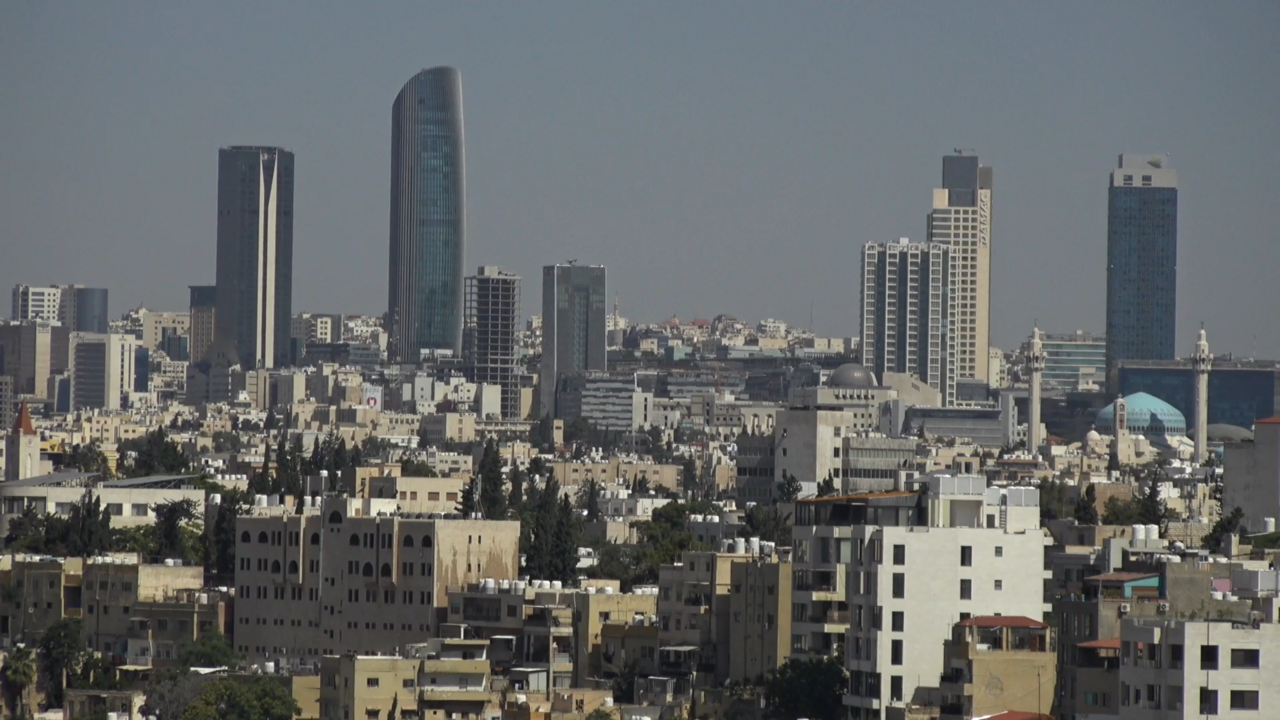
Amman, the capital of Jordan, is a city that seamlessly blends modernity with ancient history. Located on a series of hills, the city is known for its ancient ruins, such as the Citadel and the Roman Theatre, as well as its bustling modern life. Amman is Jordan’s political, economic, and cultural center, with a rapidly growing population and an expanding skyline. The city is a melting pot of cultures, with influences from the Roman, Byzantine, and Ottoman periods, which can be seen in its architecture and cultural landmarks. Amman is also known for its vibrant food scene, bustling markets, and as a gateway to the historic sites of Petra and the Dead Sea.
Interesting Fact:
Amman was built on seven hills, much like Rome, and it has been continuously inhabited for thousands of years.
Kazakhstan – Astana (Nur-Sultan)
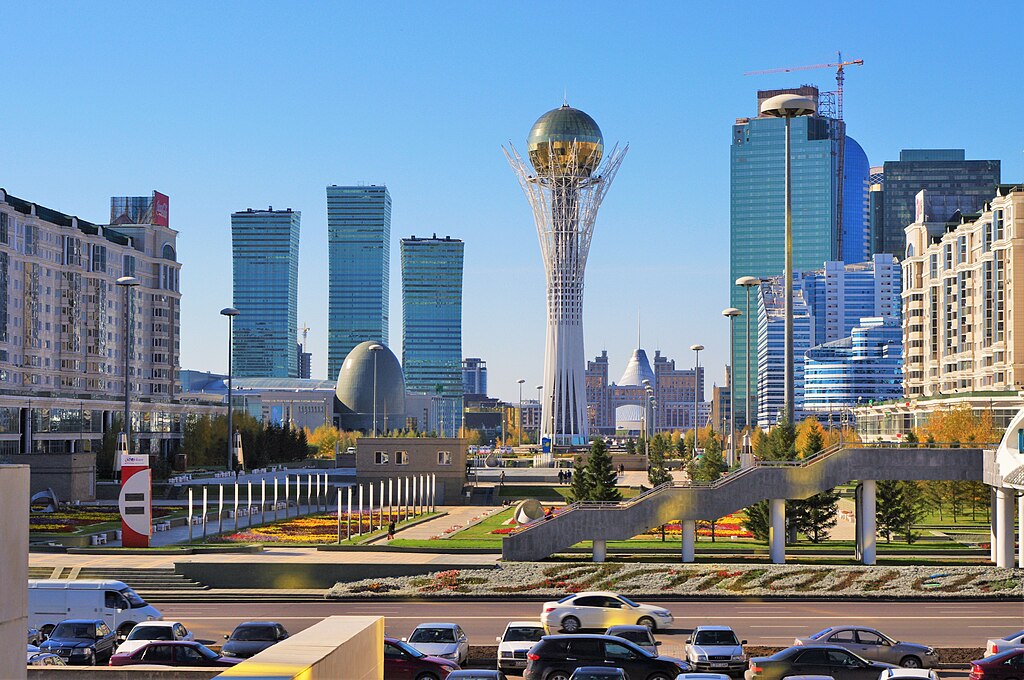
Astana, now renamed Nur-Sultan in honor of Kazakhstan’s first president, is the capital city of Kazakhstan. Located in the heart of the country, the city was only designated as the capital in 1997, but it has since transformed into a modern metropolis. Nur-Sultan is known for its futuristic architecture, including the Bayterek Tower and the Khan Shatyr Entertainment Center, as well as its grand government buildings. The city’s rapid development is part of Kazakhstan’s broader efforts to modernize its infrastructure and economy. Despite its modern appearance, Nur-Sultan also celebrates Kazakhstan’s rich cultural heritage, with museums, theaters, and traditional festivals that showcase the nation’s history and diversity.
Interesting Fact:
Nur-Sultan is one of the youngest capital cities in the world, having only been designated as the capital in 1997.
Kuwait – Kuwait City

Kuwait City, the capital of Kuwait, is a modern city located on the coast of the Persian Gulf. It is a major financial and cultural hub in the Middle East and one of the wealthiest cities in the region. The city is known for its impressive skyline, dominated by the Kuwait Towers, which are one of the city’s most iconic landmarks. Kuwait City also boasts a rich cultural scene, with museums such as the Kuwait National Museum, the Tareq Rajab Museum, and the Sadu House. The city is a melting pot of modernity and tradition, with luxury shopping malls, high-end hotels, and traditional souks. Kuwait City has a long history as a trading port, and its modern development is deeply influenced by its oil wealth.
Interesting Fact:
Kuwait City is home to the Kuwait Towers, three towers that are a national symbol and feature one of the largest revolving restaurants in the world.
Kyrgyzstan – Bishkek
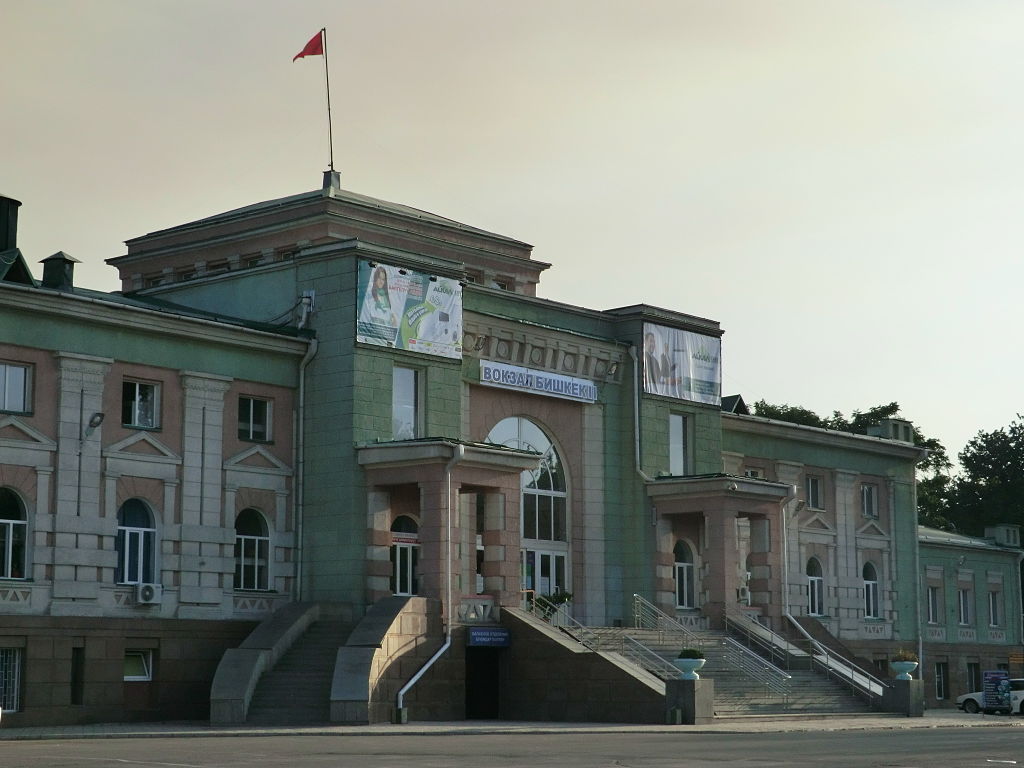
Bishkek, the capital of Kyrgyzstan, is located at the foot of the majestic Tien Shan Mountains. Known for its green parks, Soviet-era architecture, and lively markets, Bishkek is the cultural and economic heart of Kyrgyzstan. The city is home to many parks, including Ala-Too Square, which serves as the political center of the country. Bishkek has a youthful atmosphere, as a large portion of the population is under the age of 30. The city is known for its bustling bazaars, where visitors can find everything from fresh produce to traditional crafts. Bishkek is also a gateway to the natural beauty of Kyrgyzstan, with numerous hiking and outdoor activities available in the surrounding mountains.
Interesting Fact:
Bishkek’s Ala-Too Square is the site of many important national events and is known for its large statue of the Manas, a legendary Kyrgyz hero.
Laos – Vientiane
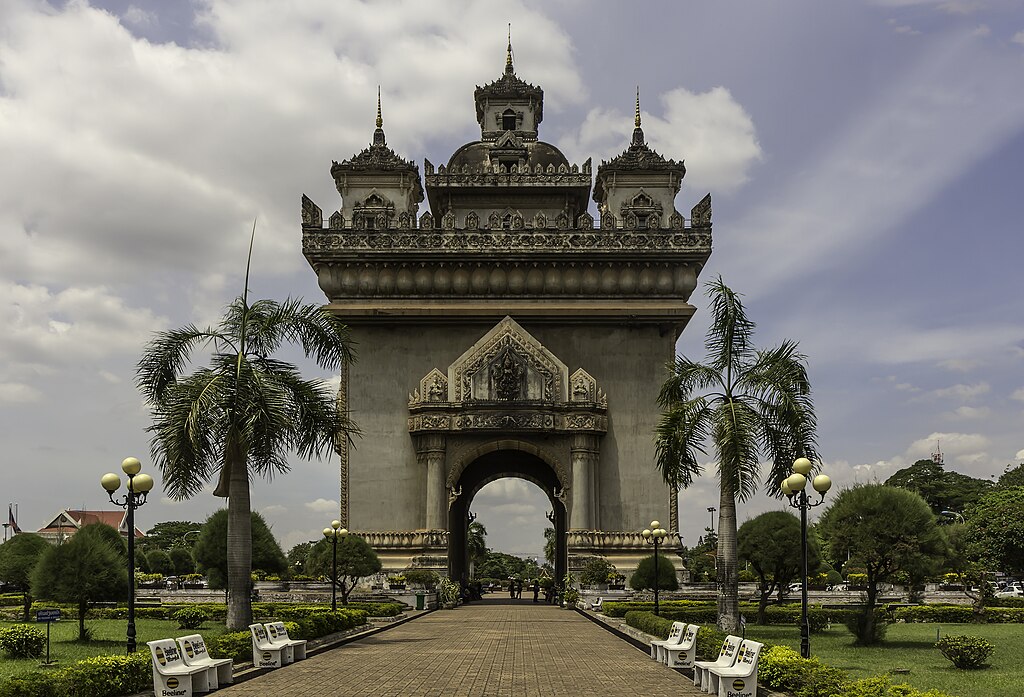
Vientiane, the capital of Laos, is a quiet and relaxed city located along the banks of the Mekong River. It is the smallest capital in Southeast Asia but has a rich history and a blend of French colonial and traditional Lao architecture. Vientiane is home to important Buddhist temples such as Wat Sisaket, Wat Phra That Luang, and the Golden Stupa, which is a national symbol of Laos. The city’s laid-back atmosphere, combined with its ancient monuments and modern infrastructure, makes it a unique and charming destination. Vientiane has a thriving arts scene, with several galleries, theaters, and cultural events that showcase Laos’s heritage and creativity.
Interesting Fact:
Vientiane is one of the few capitals in Southeast Asia that still maintains a relatively tranquil and slow-paced lifestyle compared to larger cities in the region.
Lebanon – Beirut

Beirut, the capital of Lebanon, is a city that has long been known for its rich history, cultural diversity, and vibrant lifestyle. Situated on the Mediterranean coast, Beirut has been a crossroads for civilizations for thousands of years. The city boasts a blend of ancient Phoenician ruins, Ottoman-era buildings, and modern skyscrapers. Beirut is known for its thriving arts scene, including theaters, galleries, and music venues. The city is also famous for its diverse culinary offerings, from traditional Lebanese dishes to international cuisine. Beirut’s nightlife is lively and attracts visitors from around the world. Despite facing challenges such as political instability and reconstruction after the civil war, Beirut remains a dynamic and resilient city.
Interesting Fact:
Beirut is often referred to as the “Paris of the Middle East” due to its cosmopolitan atmosphere, vibrant culture, and history as a center for learning and trade.
Malaysia – Kuala Lumpur
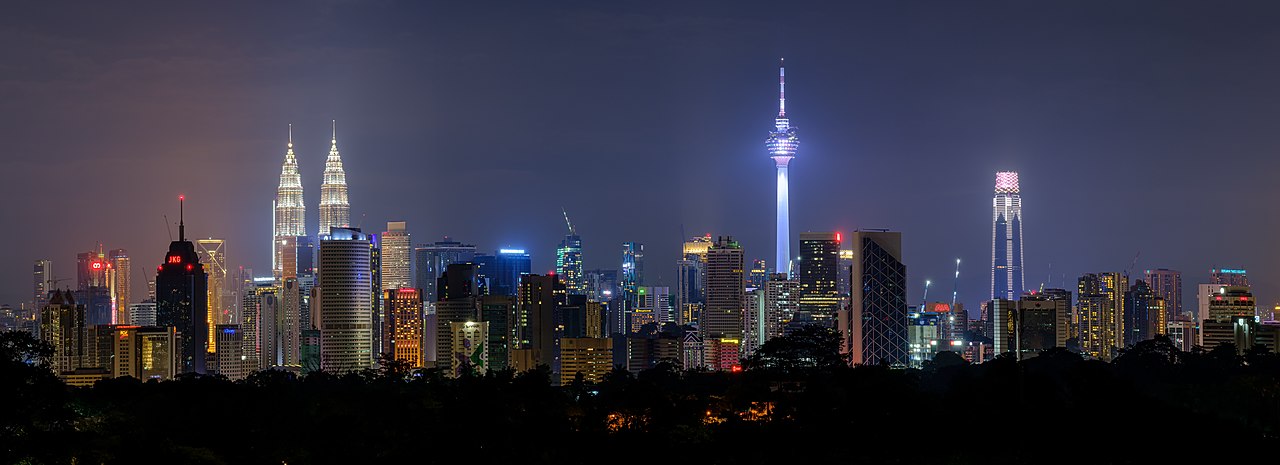
Kuala Lumpur, often abbreviated as KL, is the capital and largest city of Malaysia. It is a bustling metropolis known for its striking skyline, dominated by the iconic Petronas Twin Towers, once the tallest buildings in the world. The city is a melting pot of cultures, with influences from Malay, Chinese, Indian, and European traditions, which is reflected in its diverse architecture, cuisine, and festivals. Kuala Lumpur’s shopping districts, such as Bukit Bintang, offer everything from luxury brands to street markets. The city also boasts numerous parks, gardens, and cultural institutions, including the National Museum and the Islamic Arts Museum. Kuala Lumpur is not only Malaysia’s political and economic center but also a global city that plays an essential role in Southeast Asia’s trade and culture.
Interesting Fact:
Kuala Lumpur’s Petronas Twin Towers are still the tallest twin towers in the world, standing at 452 meters (1,483 feet) tall.
Maldives – Malé
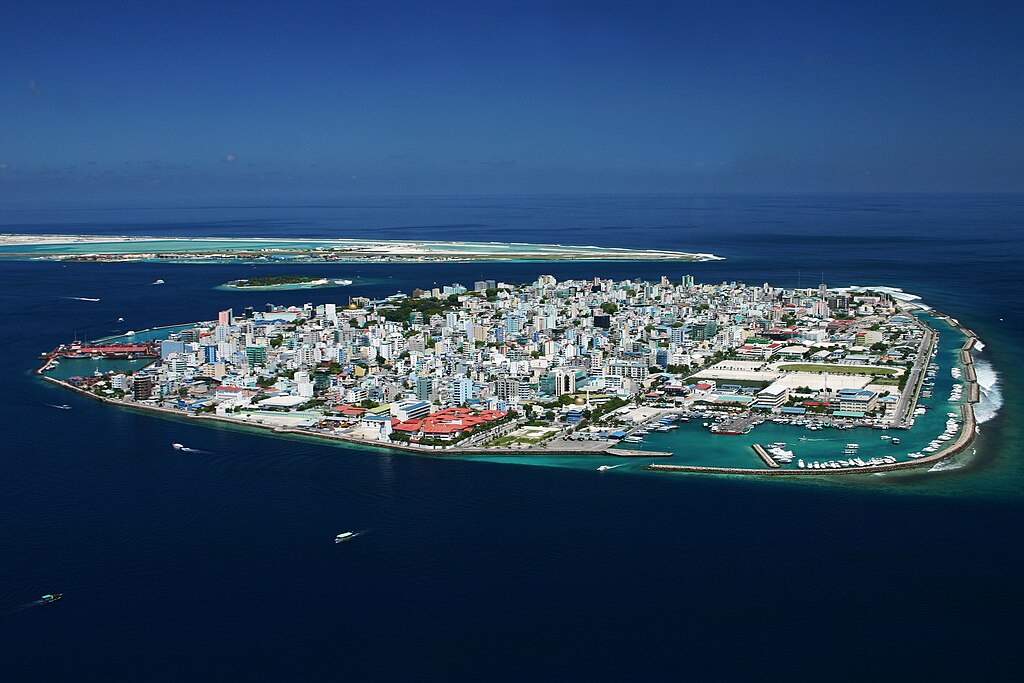
Malé is the capital and the most populous city of the Maldives, an island nation located in the Indian Ocean. The city is the political, economic, and cultural heart of the country, despite being situated on a small island. Malé is known for its colorful buildings, busy markets, and vibrant street life. It is also home to some significant landmarks such as the Hukuru Miskiy (Old Friday Mosque), the Maldives Islamic Centre, and the National Museum. Malé’s compact size makes it easy to explore on foot, and visitors can experience a unique mix of modern and traditional Maldivian life. The city is surrounded by stunning turquoise waters and offers easy access to the country’s famous resorts and pristine beaches.
Interesting Fact:
Malé is one of the smallest capitals in the world by land area, measuring just 9 square kilometers (3.5 square miles).
Mongolia – Ulaanbaatar

Ulaanbaatar, often abbreviated as UB, is the capital and largest city of Mongolia. Situated at the foot of the Bogd Khan Mountain, Ulaanbaatar serves as the political, cultural, and economic center of the country. The city is known for its vast contrasts, blending Soviet-era architecture with traditional Mongolian influences. Landmark sites include the Gandan Monastery, Sukhbaatar Square, and the Zaisan Memorial. Ulaanbaatar’s rapidly growing population and booming economy reflect Mongolia’s transition to a market-based economy. While the city is modernizing, Ulaanbaatar still retains much of its traditional charm, with large outdoor markets, traditional yurts (gers), and a rich Mongolian heritage. The surrounding landscapes, such as the Gobi Desert, are also part of the city’s allure for visitors.
Interesting Fact:
Ulaanbaatar is one of the coldest capital cities in the world, with winter temperatures regularly dropping below -20°C (-4°F).
Myanmar – Naypyidaw
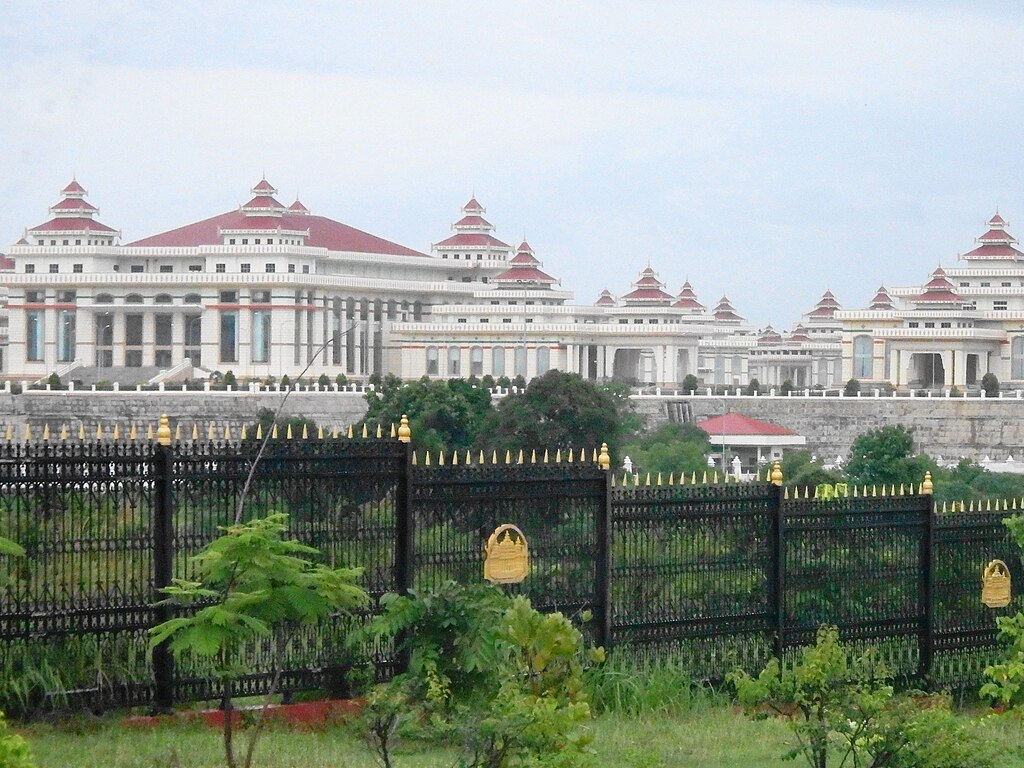
Naypyidaw, also spelled Nay Pyi Taw, is the capital of Myanmar (Burma) and one of the newest capital cities in the world. It was officially designated as the capital in 2005, replacing Yangon. Naypyidaw is a meticulously planned city, known for its wide, spacious roads, government buildings, and luxurious hotels. The city is divided into zones, with each serving a specific purpose, such as residential, government, or commercial areas. One of the notable features of Naypyidaw is its large number of parks, lakes, and gardens, making it a green city in contrast to the bustling urban centers of other capitals. Though it is less crowded than other capitals, Naypyidaw is the seat of Myanmar’s government and plays a crucial role in the country’s political and administrative functions.
Interesting Fact:
Naypyidaw is famous for its wide, empty streets, and some of its roads are so wide they seem to stretch endlessly with little traffic.
Nepal – Kathmandu

Kathmandu is the capital and largest city of Nepal, nestled in the Kathmandu Valley in the Himalayas. It is the cultural and spiritual heart of Nepal, home to many temples, shrines, and monuments that reflect the country’s rich history and religious diversity. The city is a UNESCO World Heritage site and boasts landmarks such as the Swayambhunath Stupa (Monkey Temple), the Pashupatinath Temple, and Durbar Square. Kathmandu has long been a destination for trekkers, adventurers, and spiritual seekers, offering access to the Annapurna and Everest regions. The city is a hub of Buddhism, Hinduism, and ancient traditions, with vibrant markets, arts, and festivals. Kathmandu is also known for its hospitality and for being the gateway to the Himalayas.
Interesting Fact:
Kathmandu’s Durbar Square is a historic site that was once the royal palace complex of the Malla kings, and it remains a key center for Nepal’s cultural celebrations.
North Korea – Pyongyang
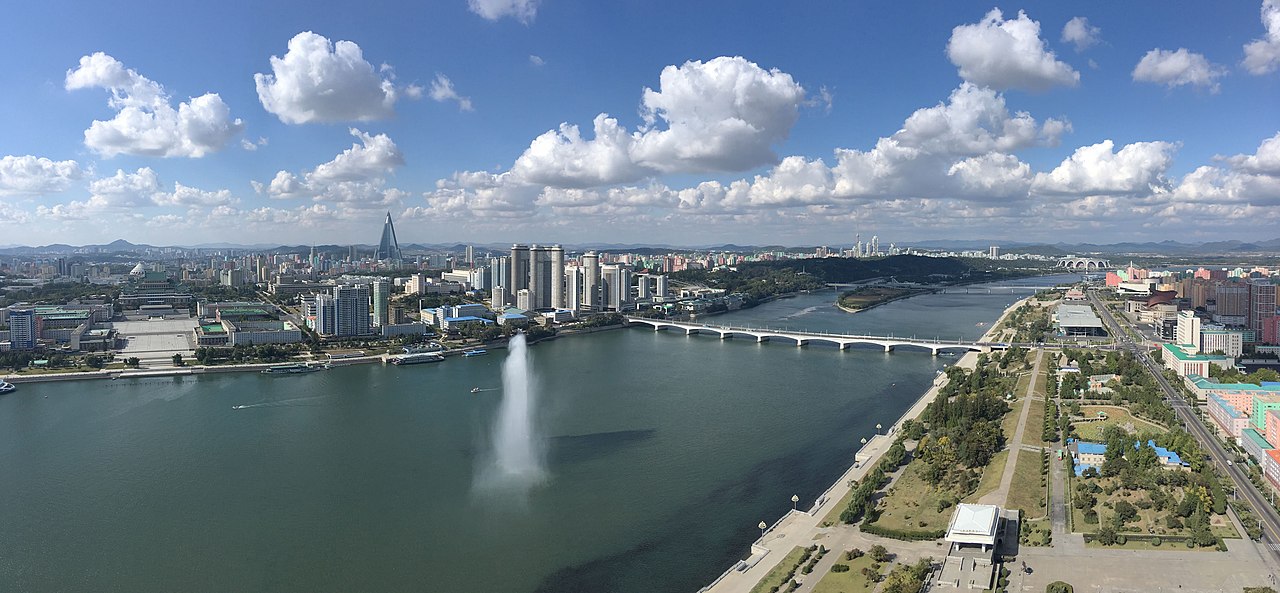
Pyongyang is the capital and largest city of North Korea, located on the Taedong River. It is the political, economic, and cultural center of the country and a symbol of North Korea’s socialist achievements. Pyongyang is known for its monumental architecture, wide boulevards, and grand public squares, such as Kim Il-sung Square. The city features large statues of the country’s leaders, the Mansudae Fountain, and the Kumsusan Palace of the Sun, where the bodies of former leaders are preserved. Pyongyang’s infrastructure is largely controlled by the state, and it is often portrayed as a showcase of North Korea’s achievements. Despite its isolated nature, Pyongyang also has cultural institutions, museums, and theaters.
Interesting Fact:
Pyongyang is one of the most controlled cities in the world, with many restrictions on foreigners, and it is also known for its massive parades and celebrations.
Oman – Muscat
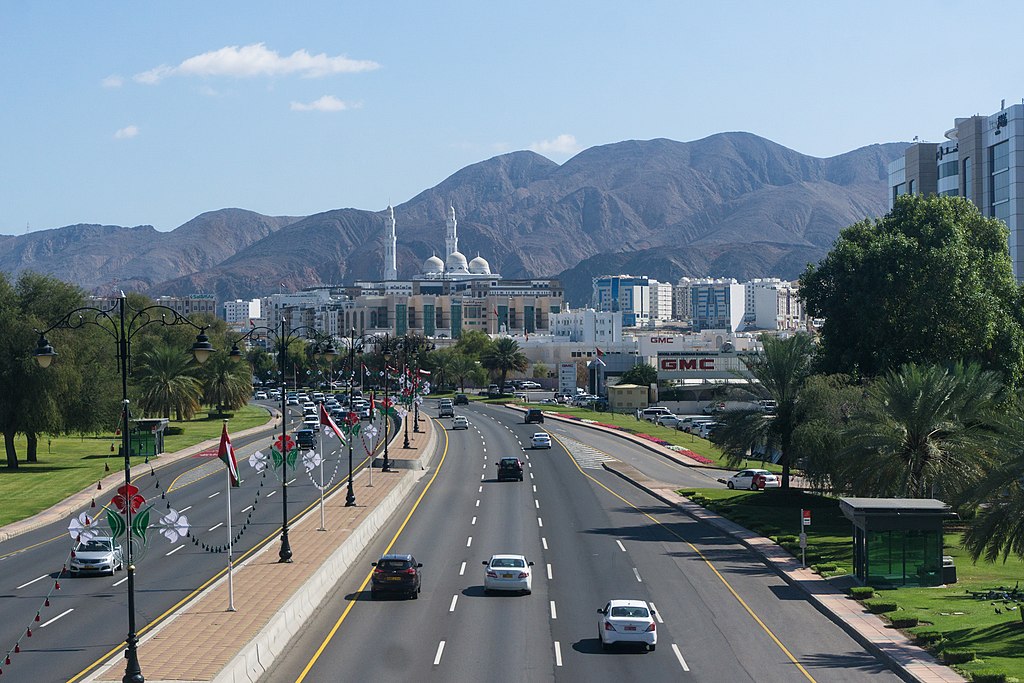
Muscat, the capital of Oman, is located on the Arabian Peninsula along the coast of the Persian Gulf. The city is known for its beautiful natural surroundings, including rocky hills, white-sand beaches, and turquoise waters. Muscat is a blend of modernity and tradition, with contemporary infrastructure and historic sites such as the Sultan Qaboos Grand Mosque, the Royal Opera House, and the Muttrah Corniche. The city has a rich history as a trading port and a cultural crossroads, with influences from the Arabian, Persian, Indian, and African cultures. Muscat is also known for its seafood, bustling markets, and luxury resorts, making it a top destination for tourists seeking both cultural experiences and natural beauty.
Interesting Fact:
Muscat has no skyscrapers, a unique feature for a modern city, as the government has regulated building height to preserve the city’s traditional architecture and natural beauty.
Pakistan – Islamabad
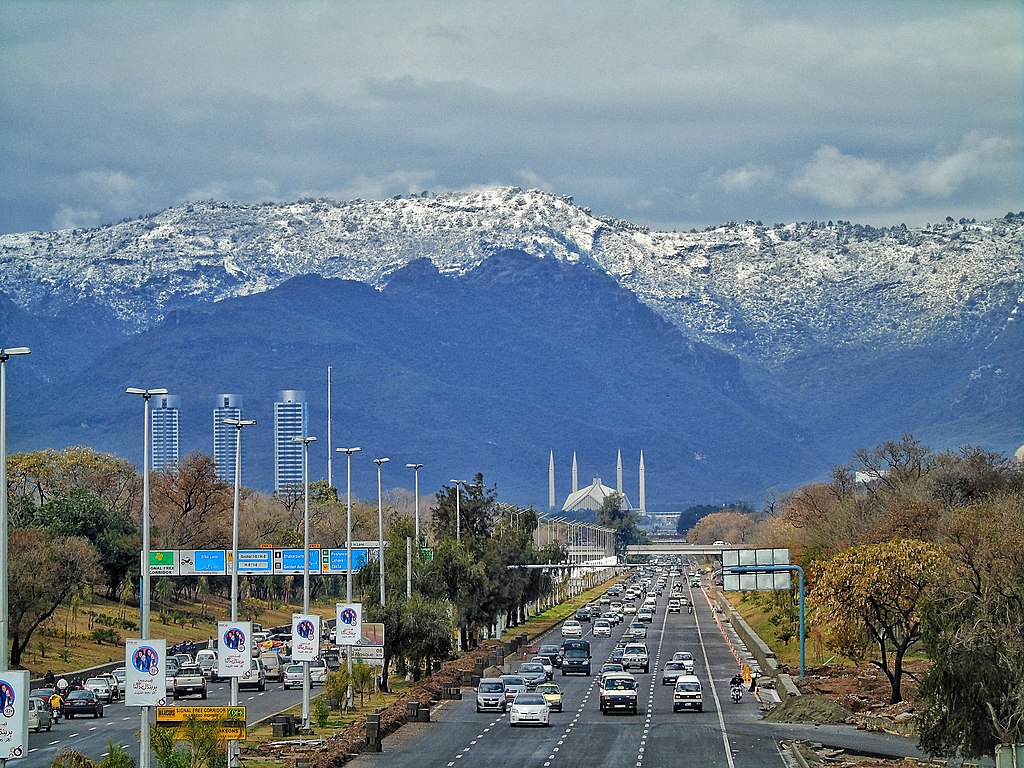
Islamabad is the capital city of Pakistan, located in the northern part of the country, at the base of the Margalla Hills. It was purpose-built in the 1960s to replace Karachi as the capital, and it is known for its modern infrastructure, spacious streets, and green spaces. Islamabad is a city of contrasts, with the bustling markets and modern buildings of the city center and the serene natural beauty of nearby hiking trails and parks. The city is home to some of Pakistan’s most important landmarks, such as the Faisal Mosque, the largest mosque in South Asia, and the Pakistan Monument. Islamabad is also the seat of government and a center for education, culture, and diplomacy in Pakistan.
Interesting Fact:
Islamabad is one of the cleanest and most organized cities in Pakistan, with large parks and wide roads, earning it the nickname “City of Peace.”
Palestine – Ramallah
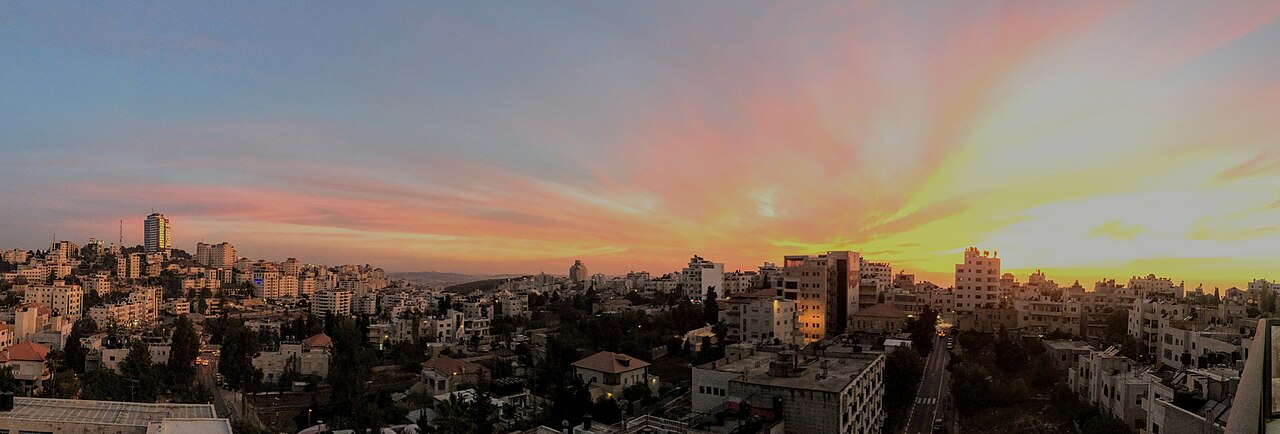
Ramallah is the administrative capital of the Palestinian Authority and is located in the West Bank, just north of Jerusalem. Though it is not officially recognized as the capital by all nations, Ramallah serves as the political and economic hub of Palestine. The city has a rich history and is known for its vibrant culture, diverse population, and role in Palestinian politics. It is home to many Palestinian institutions, including government offices, cultural centers, and the headquarters of the Palestinian Authority. Ramallah’s central location, near important historical and religious sites, makes it an important city for Palestinians and visitors alike. It has experienced rapid growth and development in recent years, with new infrastructure, shopping centers, and cultural spaces emerging alongside its traditional markets and historic buildings.
Interesting Fact:
Ramallah has a thriving arts scene and is home to many cultural festivals, including the Ramallah Contemporary Dance Festival, which attracts artists and visitors from around the world.
Philippines – Manila

Manila is the capital and second-largest city of the Philippines, located on the island of Luzon. It is a bustling metropolis with a rich history, vibrant culture, and diverse population. The city is known for its Spanish colonial architecture, as seen in historic sites like Intramuros, the Manila Cathedral, and Fort Santiago. Manila is also a major center of business, education, and entertainment in the Philippines, with shopping malls, markets, and theaters providing something for everyone. The city is home to numerous museums, including the National Museum of Fine Arts, and the Rizal Park, which honors the country’s national hero, José Rizal. Manila’s port is one of the busiest in the world, contributing to the city’s economic importance.
Interesting Fact:
Manila’s Intramuros district was once the walled city during the Spanish colonial era and is considered one of the oldest districts in the city.
Qatar – Doha
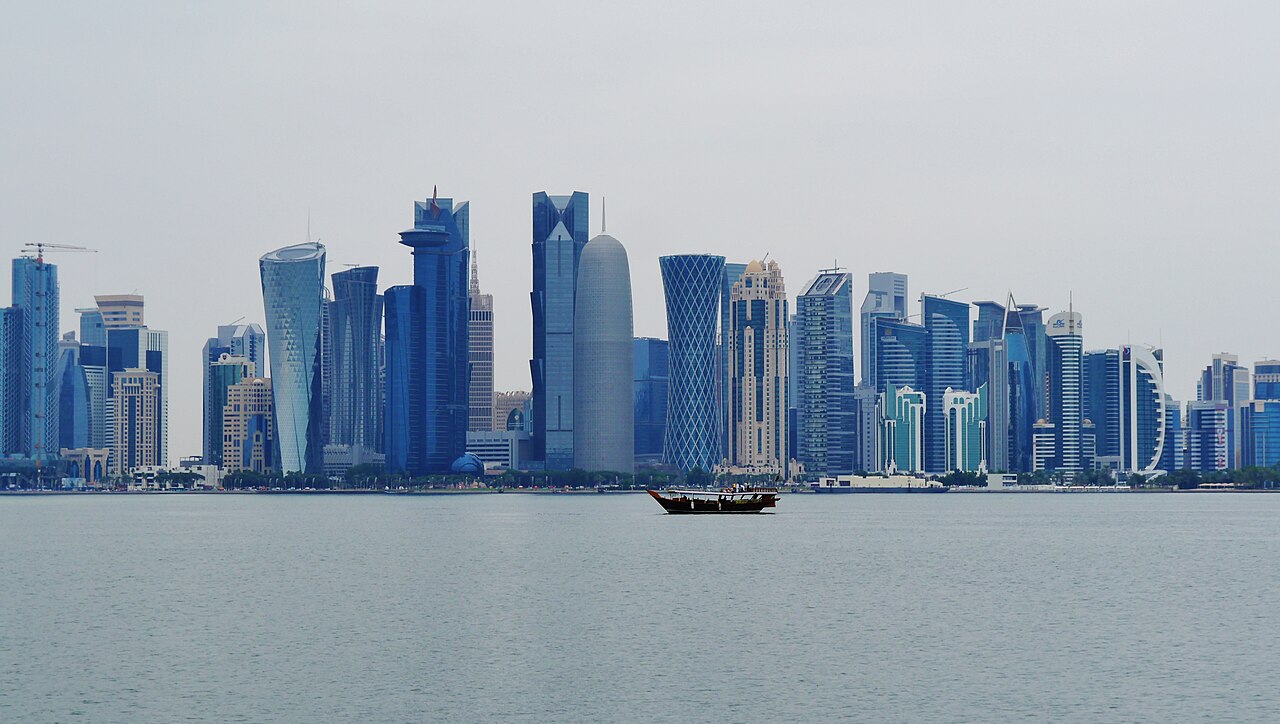
Doha is the capital and largest city of Qatar, situated on the northeastern coast of the Arabian Peninsula along the Persian Gulf. The city has transformed into a modern metropolis over the past few decades, with gleaming skyscrapers, luxury hotels, and world-class infrastructure. Doha is known for its impressive skyline, which includes iconic structures such as the Aspire Tower and the Museum of Islamic Art. The city has emerged as a major center for finance, commerce, and culture in the Middle East. Doha is also famous for its rich cultural heritage, with numerous museums, galleries, and cultural institutions that showcase Qatar’s history and traditions. The city is home to the Al Jazeera Media Network and hosts major international events, including the 2022 FIFA World Cup.
Interesting Fact:
Doha has one of the fastest-growing economies in the world, thanks in large part to its vast natural gas reserves.
Russia – Moscow
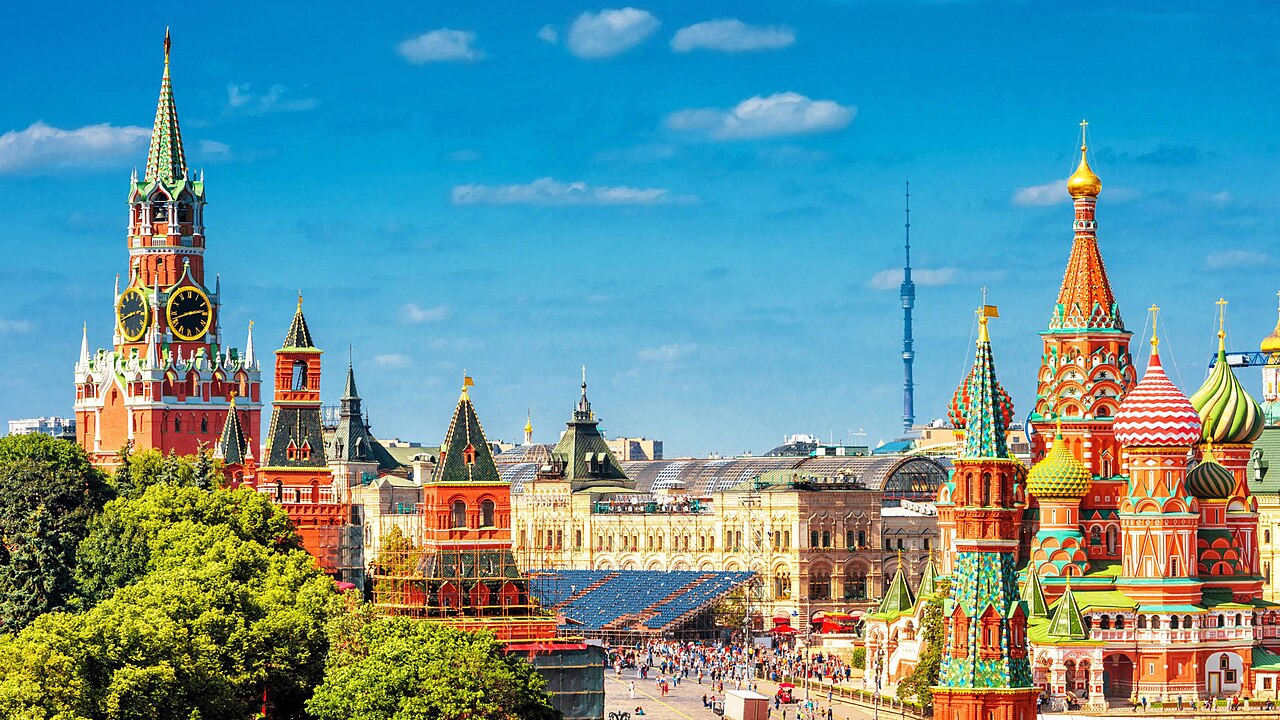
Moscow is the capital and largest city of Russia, located on the banks of the Moskva River. It is one of the world’s most important cultural, political, and economic centers. Moscow’s history dates back over 800 years, and it is home to many iconic landmarks, including the Kremlin, Red Square, St. Basil’s Cathedral, and the Bolshoi Theatre. The city is a global hub for business, culture, and science, boasting a wide array of theaters, museums, universities, and research institutions. Moscow is known for its grand architecture, from the historic structures of the Kremlin to the modern skyscrapers of Moscow City. The city’s metro system is one of the largest and most efficient in the world.
Interesting Fact:
Moscow’s Red Square is one of the most famous public spaces in the world, and it has been the site of many historical events, including Soviet military parades.
Saudi Arabia – Riyadh
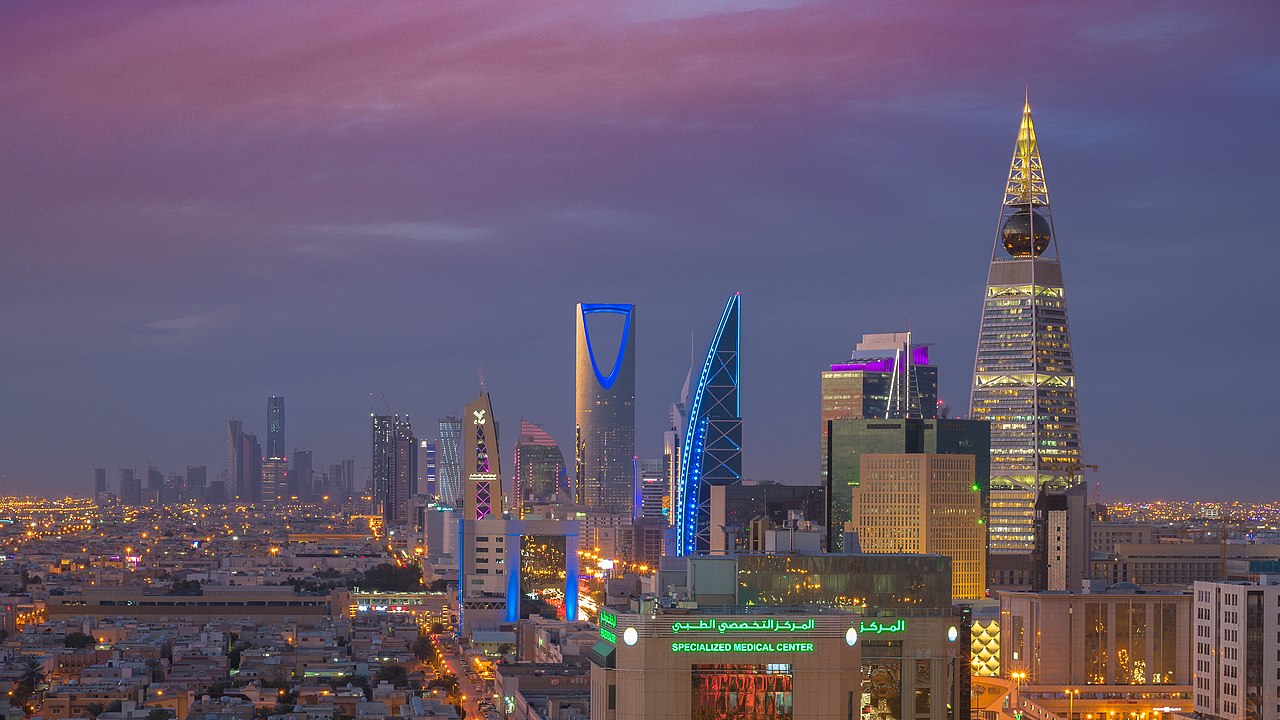
Riyadh is the capital and largest city of Saudi Arabia, located in the central part of the country. The city is the political, administrative, and cultural center of the Kingdom, and it has grown rapidly in recent decades due to Saudi Arabia’s oil wealth. Riyadh is home to numerous landmarks, including the King Abdulaziz Historical Center, the National Museum of Saudi Arabia, and the Kingdom Centre Tower, which offers a panoramic view of the city. The city also boasts modern shopping malls, luxury hotels, and traditional markets (souks). Riyadh is an important economic hub, with a thriving business district and a growing technology sector. Despite its modernity, Riyadh retains its traditional Arabic culture and is home to many cultural and religious institutions.
Interesting Fact:
Riyadh is one of the hottest cities in the world, with temperatures often exceeding 40°C (104°F) during the summer months.
Singapore – Singapore
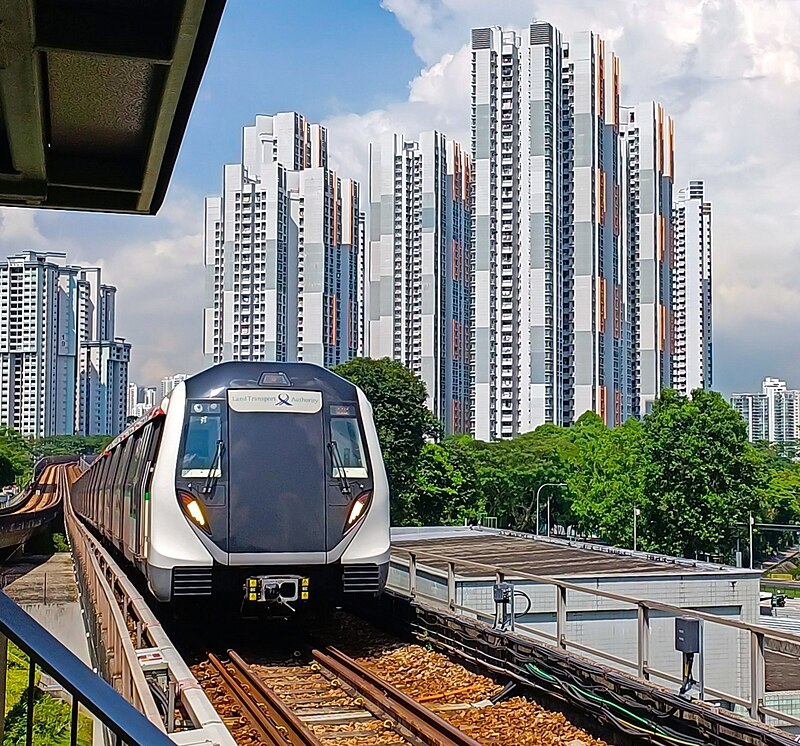
Singapore is both a city and a country, known for its cleanliness, green spaces, and modernity. The city-state is located at the southern tip of the Malay Peninsula and has become one of the world’s leading financial hubs. Singapore’s skyline is famous for its futuristic architecture, including the Marina Bay Sands resort, the Singapore Flyer, and the Gardens by the Bay. The city is a cultural melting pot, with a harmonious blend of Chinese, Malay, Indian, and Western influences. Singapore is also known for its food scene, with its hawker centers offering a wide variety of affordable and delicious local dishes. It has one of the highest standards of living in the world and is considered one of the safest and most efficient cities globally.
Interesting Fact:
Singapore is often referred to as a “City in a Garden” because of its commitment to greenery, with parks, gardens, and trees integrated into its urban landscape.
South Korea – Seoul

Seoul is the capital and largest city of South Korea, located along the Han River. The city is a vibrant mix of traditional Korean culture and cutting-edge technology. It is known for its bustling shopping districts, such as Myeongdong and Insadong, and its iconic landmarks, including Gyeongbokgung Palace, Bukchon Hanok Village, and Namsan Seoul Tower. Seoul is also a global leader in technology, fashion, and entertainment, with major tech companies like Samsung and LG headquartered there. The city is home to K-pop, a music genre that has taken the world by storm, and is a center for Korean cinema, fashion, and pop culture. Despite being a modern city, Seoul retains its traditional charm with its historic palaces, temples, and markets.
Interesting Fact:
Seoul’s subway system is one of the most advanced in the world, with signs in multiple languages and high-tech services such as Wi-Fi and mobile apps for convenience.
Sri Lanka – Sri Jayawardenepura Kotte (official), Colombo (commercial)

Sri Jayawardenepura Kotte, often referred to as just Sri Jayawardenepura, is the official capital of Sri Lanka, located on the outskirts of Colombo. It is the center of the country’s political activity, housing the Sri Lankan Parliament and various government offices. Despite its political significance, Sri Jayawardenepura Kotte is less urbanized than Colombo, offering a quieter, more suburban atmosphere. The city is home to numerous parks, lakes, and temples, making it a peaceful place of reflection. Colombo, on the other hand, is the commercial capital of Sri Lanka and is known for its bustling markets, beaches, and colonial architecture. Together, these two cities represent the economic and political heart of Sri Lanka.
Interesting Fact:
While Sri Jayawardenepura Kotte is the official capital, Colombo remains the largest city and serves as Sri Lanka’s commercial and financial hub.
Syria – Damascus
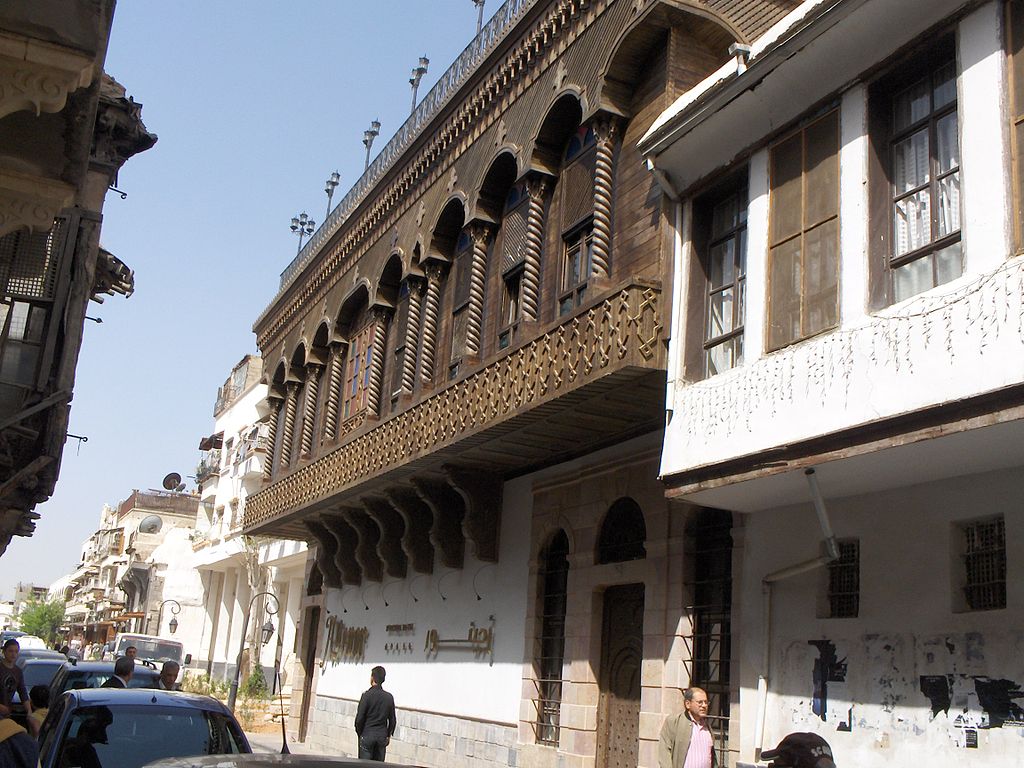
Damascus is the capital and the largest city of Syria, located in the southwestern part of the country, near the border with Lebanon. It is one of the oldest continuously inhabited cities in the world, with a history dating back over 11,000 years. The city is a cultural and religious center, with landmarks such as the Umayyad Mosque, the Old City (a UNESCO World Heritage site), and the Mausoleum of Salah ad-Din. Damascus is known for its vibrant markets, such as the Al-Hamidiyah Souq, and its historical architecture, including the Citadel of Damascus. The city has long been a crossroads of civilizations, blending Arab, Christian, and Islamic traditions. Despite the recent conflicts in Syria, Damascus remains an important city for both Syrians and visitors interested in its history and culture.
Interesting Fact:
Damascus is often called the “City of Jasmine” due to its abundance of jasmine flowers, which have been a symbol of the city for centuries.
Taiwan – Taipei

Taipei is the capital and largest city of Taiwan, located in the northern part of the island, near the Tamsui River. Known for its dynamic mix of modernity and tradition, Taipei is a major economic and cultural hub in East Asia. The city boasts a skyline dominated by the iconic Taipei 101, once the world’s tallest building, and offers a range of attractions, from bustling night markets to serene temples. Taipei is famous for its street food, such as bubble tea, dumplings, and stinky tofu, which can be found in its vibrant night markets like Shilin and Raohe Street. The city also has many parks and green spaces, including the Taipei Zoo and the Yangmingshan National Park, which offer a respite from the urban landscape. Cultural attractions include the National Palace Museum, home to an extensive collection of Chinese art and artifacts, and the Longshan Temple, a historic site dating back to the 18th century.
Interesting Fact:
Taipei is home to the world’s largest collection of Chinese imperial artifacts, housed in the National Palace Museum, many of which were moved from Beijing during the Chinese Civil War in 1949.
Tajikistan – Dushanbe

Dushanbe is the capital and largest city of Tajikistan, located in the western part of the country, in a valley surrounded by the foothills of the Pamir Mountains. The city is a political, cultural, and economic center of Tajikistan, and its name means “Monday” in Persian, reflecting its historical significance as a marketplace that held its main weekly bazaar on Mondays. Dushanbe has a blend of Soviet-era architecture and new developments, with wide avenues, parks, and green spaces. Key landmarks include the National Museum of Tajikistan, the Ismaili Center, and the majestic Dushanbe Flagpole, which holds the record for the world’s tallest flagpole. The city is also home to several universities, contributing to its educational role in the country. Dushanbe’s culinary scene features traditional Tajik dishes such as plov (pilaf), laghman (noodle soup), and shashlik (skewered meat), enjoyed by both locals and visitors. Despite its relatively small size, Dushanbe plays a significant role in Central Asia as the capital of the landlocked country of Tajikistan.
Interesting Fact:
Dushanbe is home to the tallest flagpole in the world, which stands at 165 meters (541 feet) tall. The flag at the top of the pole weighs 420 kilograms (926 pounds).
Thailand – Bangkok

Bangkok is the capital and largest city of Thailand, located in the central part of the country along the Chao Phraya River. Known as Krung Thep in Thai, meaning “City of Angels,” Bangkok is a vibrant city known for its lively street life, ornate temples, and bustling markets. The city’s skyline is dominated by modern skyscrapers and luxury hotels, yet it retains a deep connection to its past with historical sites like the Grand Palace, Wat Arun, and Wat Phra Kaew. Bangkok is a major cultural, economic, and political hub in Southeast Asia, and it is famous for its street food, diverse culture, and vibrant nightlife. The city is also known for its canals and waterways, which were once the main method of transportation. Bangkok’s extensive public transportation system includes the BTS Skytrain, MRT subway, and a network of boats on the river, making it one of the most accessible cities in Asia.
Interesting Fact:
Bangkok holds the Guinness World Record for the longest city name, which in full is “Krung Thep Maha Nakhon Buri Ram Udom Ratchathanidhi Mahintra Ayodhya, Anamindra, Puri, Sattaram, Phetchaburi, Talisai, Kamphol.” The name translates to “City of Angels, Great City of Immortality, Magnificent City of the Nine Gems, and the Royal Capital.”
Timor-Leste (East Timor) – Dili
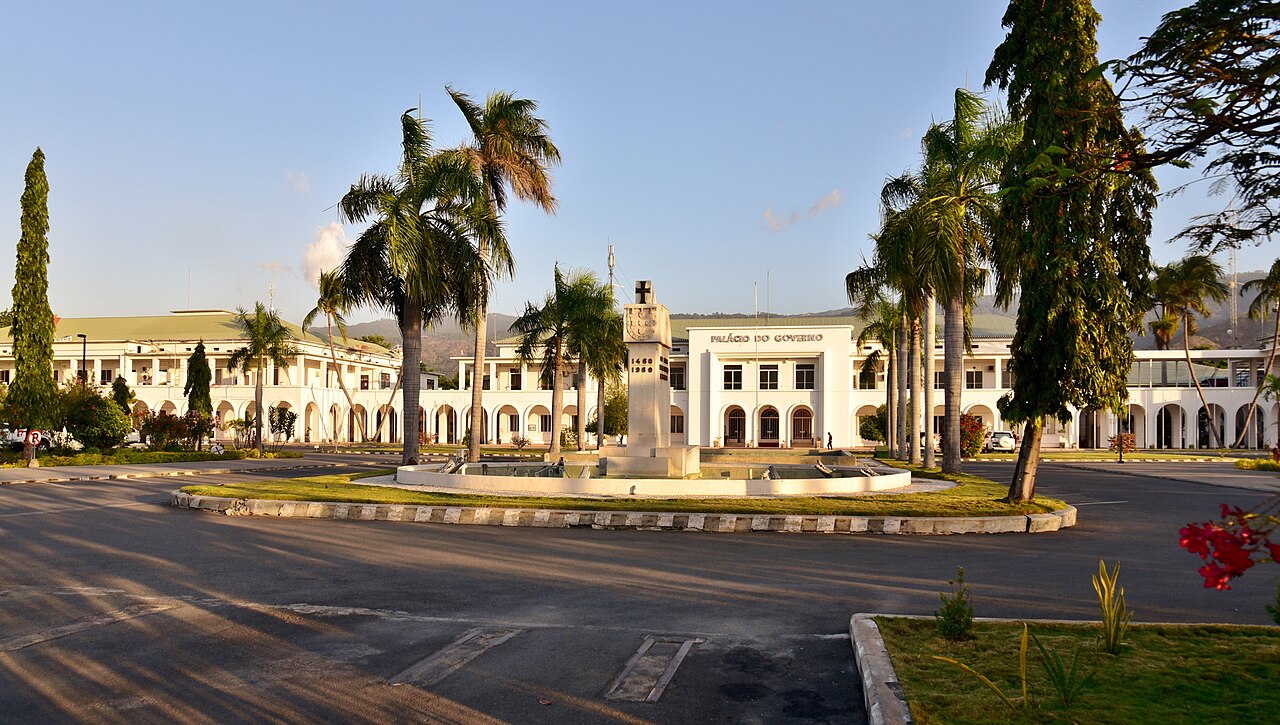
Dili is the capital and largest city of Timor-Leste (East Timor), located on the northern coast of the island of Timor. Dili is a port city and serves as the political, economic, and cultural center of the country. The city is known for its beautiful beaches, including the picturesque Cristo Rei statue overlooking the ocean, and its historical landmarks, such as the government buildings, museums, and memorials that reflect Timor-Leste’s struggle for independence. Dili is a relatively small city, but it has grown rapidly since the country’s independence from Indonesia in 2002. It is home to a vibrant mix of traditional Timorese culture and modern influences, offering a unique blend of old and new. The city’s markets offer fresh seafood and local produce, while its cafes and restaurants feature a mix of traditional East Timorese and Portuguese cuisine, a legacy of the country’s colonial past.
Interesting Fact:
Dili is home to the Cristo Rei statue, a towering monument of Jesus Christ that overlooks the city and the sea. It is one of the largest statues of Christ in the world.
Turkey – Ankara
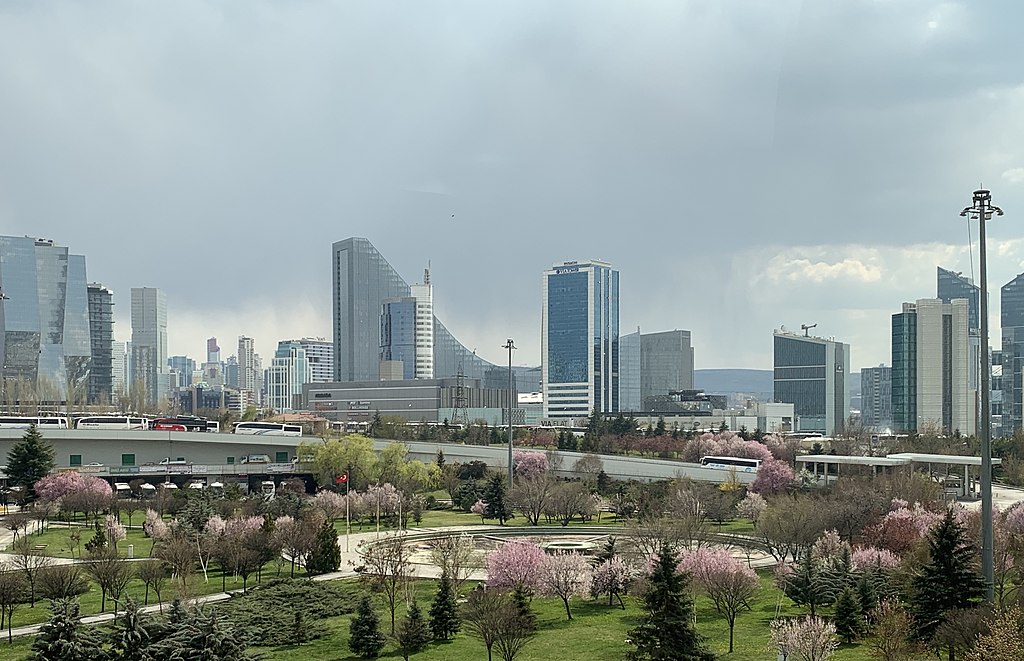
Ankara is the capital of Turkey, located in the central part of the country. It became the capital in 1923, replacing Istanbul, and has since grown into a major political, administrative, and cultural center. Ankara is home to many government buildings, embassies, and foreign missions. The city is also known for its universities, museums, and theaters, making it a key center for education and the arts in Turkey. One of Ankara’s most famous landmarks is the Anıtkabir, the mausoleum of Mustafa Kemal Atatürk, the founder of the modern Turkish Republic. The city has a mix of modern architecture and historic sites, such as the ancient Roman Temple of Augustus and the ruins of the old Ankara Castle. Despite its political significance, Ankara is less bustling than Istanbul, providing a quieter and more laid-back atmosphere while still offering plenty to explore.
Interesting Fact:
Ankara’s ancient castle, the Ankara Kalesi, offers panoramic views of the city and is one of the oldest and most historic landmarks in the city, dating back to the Roman and Byzantine periods.
Turkmenistan – Ashgabat

Ashgabat is the capital and largest city of Turkmenistan, located in the southern part of the country near the border with Iran. The city is known for its grandiose architecture, including monumental white-marble buildings, wide avenues, and impressive government buildings. Ashgabat has undergone rapid modernization, with many new structures being built in recent years as part of the country’s ambitious development plans. The city is home to many parks, museums, and cultural institutions, reflecting Turkmenistan’s rich cultural heritage. One of Ashgabat’s most famous landmarks is the Independence Monument, which stands in the center of the city and symbolizes the country’s sovereignty. Ashgabat also features a number of modern shopping centers and international hotels, making it a hub for tourism in Central Asia.
Interesting Fact:
Ashgabat is known for its distinctive white marble architecture, with the city being home to some of the most significant white marble buildings in the world.
United Arab Emirates – Abu Dhabi
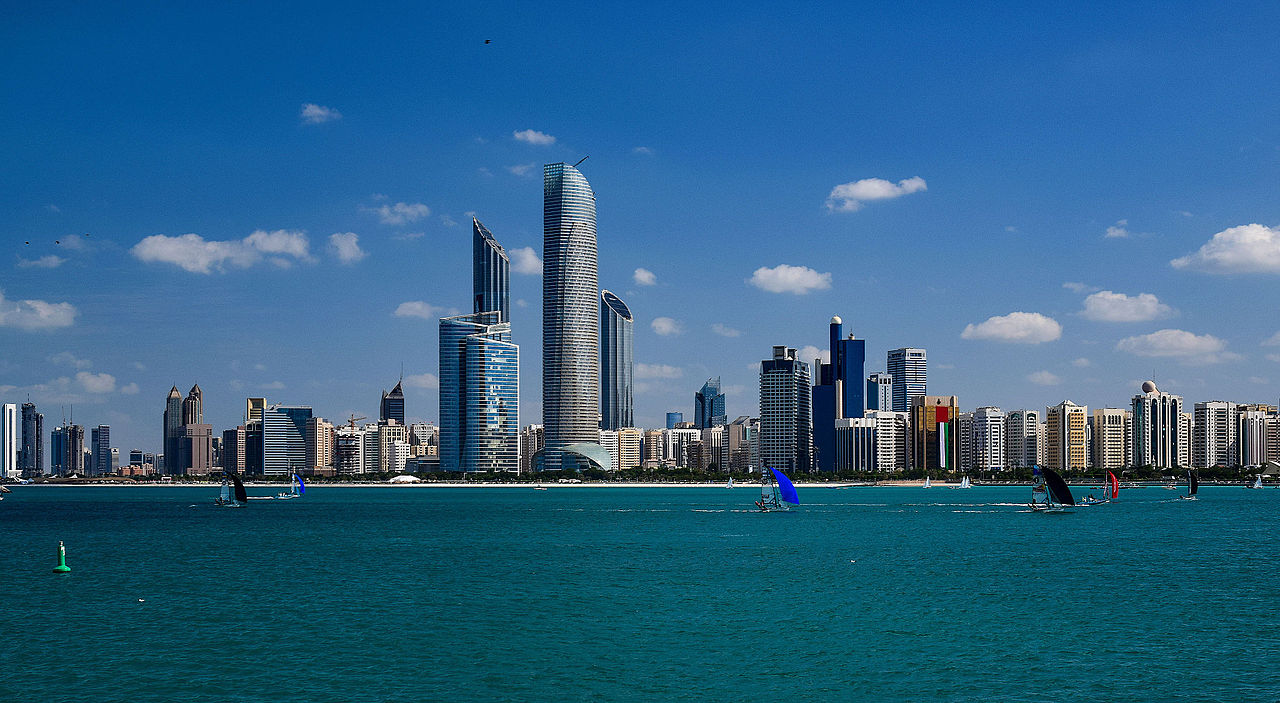
Abu Dhabi is the capital and largest city of the United Arab Emirates (UAE), located on an island in the Persian Gulf. The city is known for its modern skyline, luxury shopping, and cultural landmarks, such as the Sheikh Zayed Grand Mosque, one of the largest mosques in the world. Abu Dhabi is a major center for business, finance, and oil production, and it is one of the wealthiest cities in the world. The city has a rapidly growing arts and culture scene, with institutions like the Louvre Abu Dhabi and the Guggenheim Abu Dhabi (under construction) drawing international attention. Abu Dhabi is also known for its extensive green spaces, parks, and beaches, providing a perfect balance between modernity and nature. It is also home to the Formula 1 Yas Marina Circuit, which hosts the annual Abu Dhabi Grand Prix.
Interesting Fact:
Abu Dhabi’s Sheikh Zayed Grand Mosque is one of the largest mosques in the world and can accommodate up to 40,000 worshippers at one time.
Uzbekistan – Tashkent
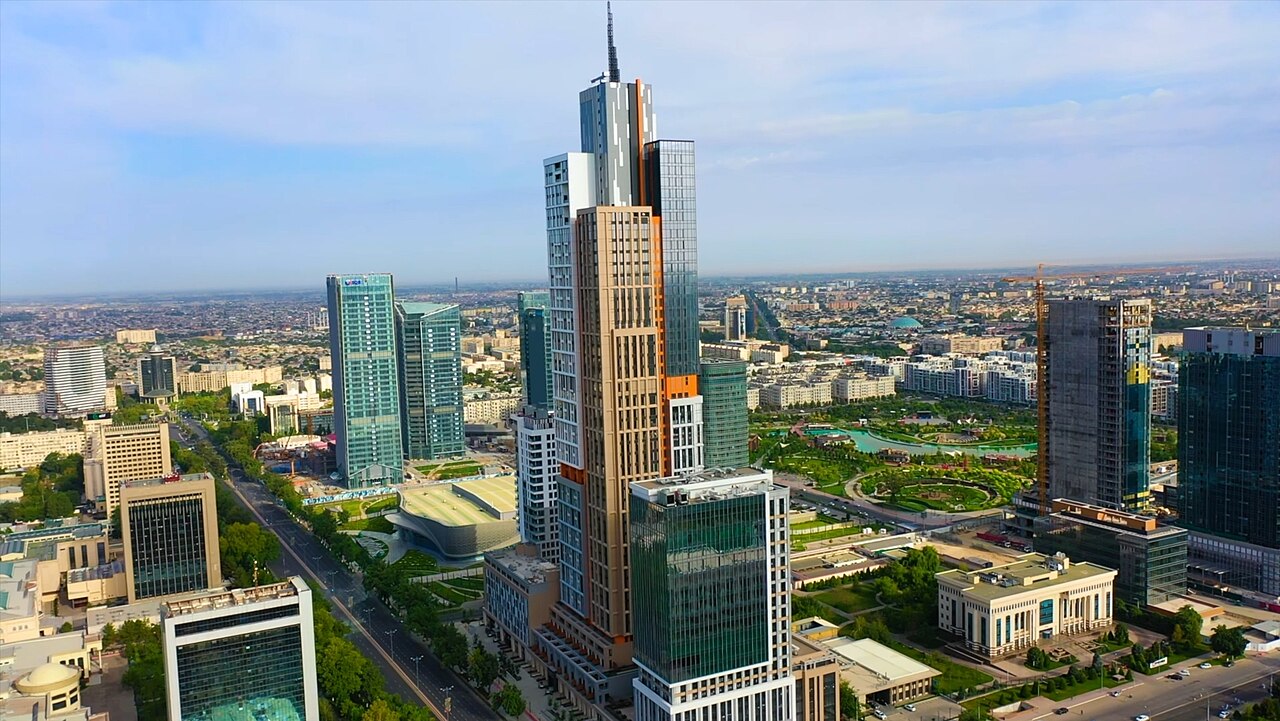
Tashkent is the capital and largest city of Uzbekistan, located in the eastern part of the country near the border with Kazakhstan. The city is known for its mix of Soviet-era and Islamic architecture, with modern skyscrapers standing alongside historical buildings such as the Khast Imam Complex and the Tashkent Metro, one of the oldest in Central Asia. Tashkent is the political, economic, and cultural center of Uzbekistan, and it plays a significant role in the country’s transport infrastructure. The city has numerous parks, gardens, and museums, and is home to a thriving arts scene, including traditional Uzbek music and dance. Tashkent’s bazars, including the Chorsu Bazaar, offer a rich selection of local goods, spices, and textiles.
Interesting Fact:
Tashkent’s metro system is known for its beautifully decorated stations, with many featuring intricate mosaics, marble columns, and chandeliers.
Vietnam – Hanoi
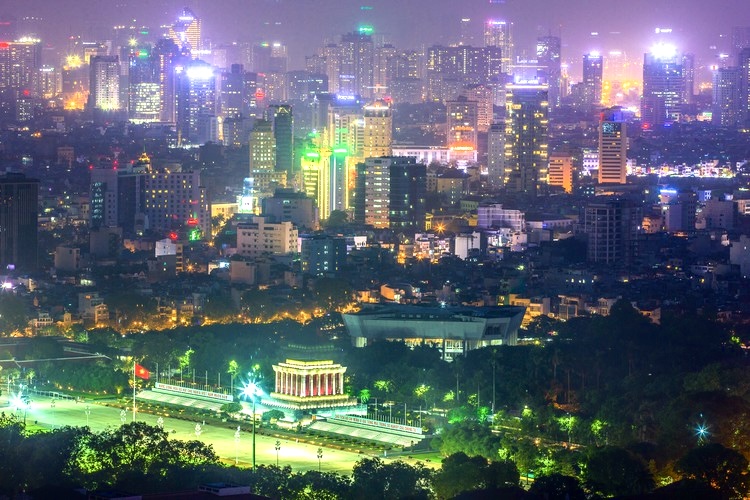
Hanoi is the capital of Vietnam and the country’s second-largest city, located in the northern part of the country along the Red River. The city is known for its rich history, French colonial architecture, and vibrant culture. Hanoi’s Old Quarter is a maze of narrow streets, traditional shops, and street food vendors. The city is also home to several historic landmarks, including the Hoan Kiem Lake, the Ho Chi Minh Mausoleum, and the Temple of Literature, which dates back to the 11th century. Hanoi is considered the cultural capital of Vietnam, with a strong emphasis on traditional music, dance, and literature. The city is also known for its thriving arts scene and is home to several universities and research centers.
Interesting Fact:
Hanoi’s Old Quarter is famous for its 36 streets, each named after the type of goods historically sold on that street, such as silk, metals, and incense.
Yemen – Sana’a
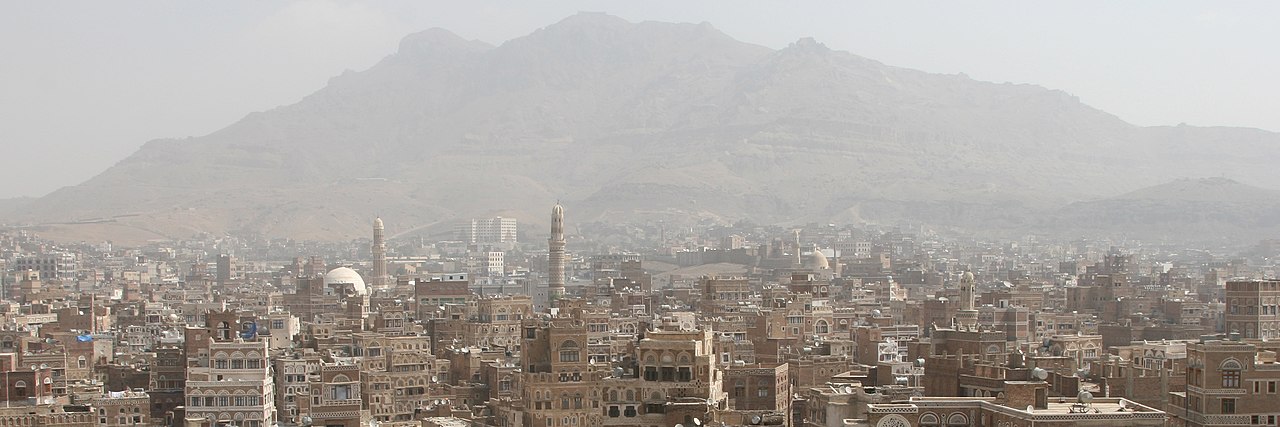
Sana’a is the capital and largest city of Yemen, located in the western part of the country. It is one of the oldest cities in the world and has been continuously inhabited for over 2,500 years. Sana’a is known for its unique architecture, with traditional multi-story houses built of mud bricks, often decorated with intricate patterns and white gypsum. The city’s Old Town is a UNESCO World Heritage Site, featuring historic mosques, palaces, and markets. Despite the ongoing conflict in Yemen, Sana’a remains an important center of culture, politics, and religion in the country. The city is also known for its traditional cuisine, which includes dishes like saltah (a stew) and mandi (a rice dish with meat).
Interesting Fact:
Sana’a’s Old Town is renowned for its tower houses, some of which are more than 500 years old and feature intricate carvings and brightly painted facades.




